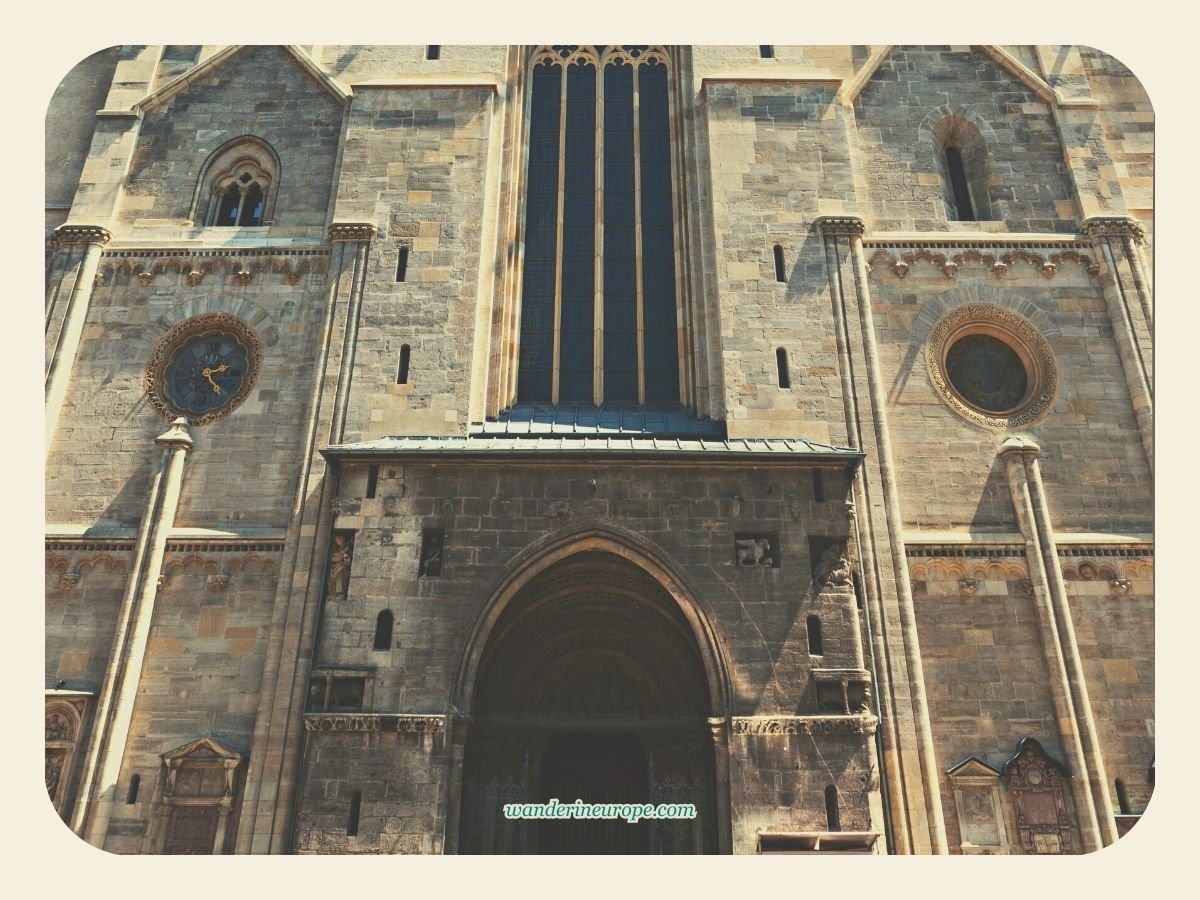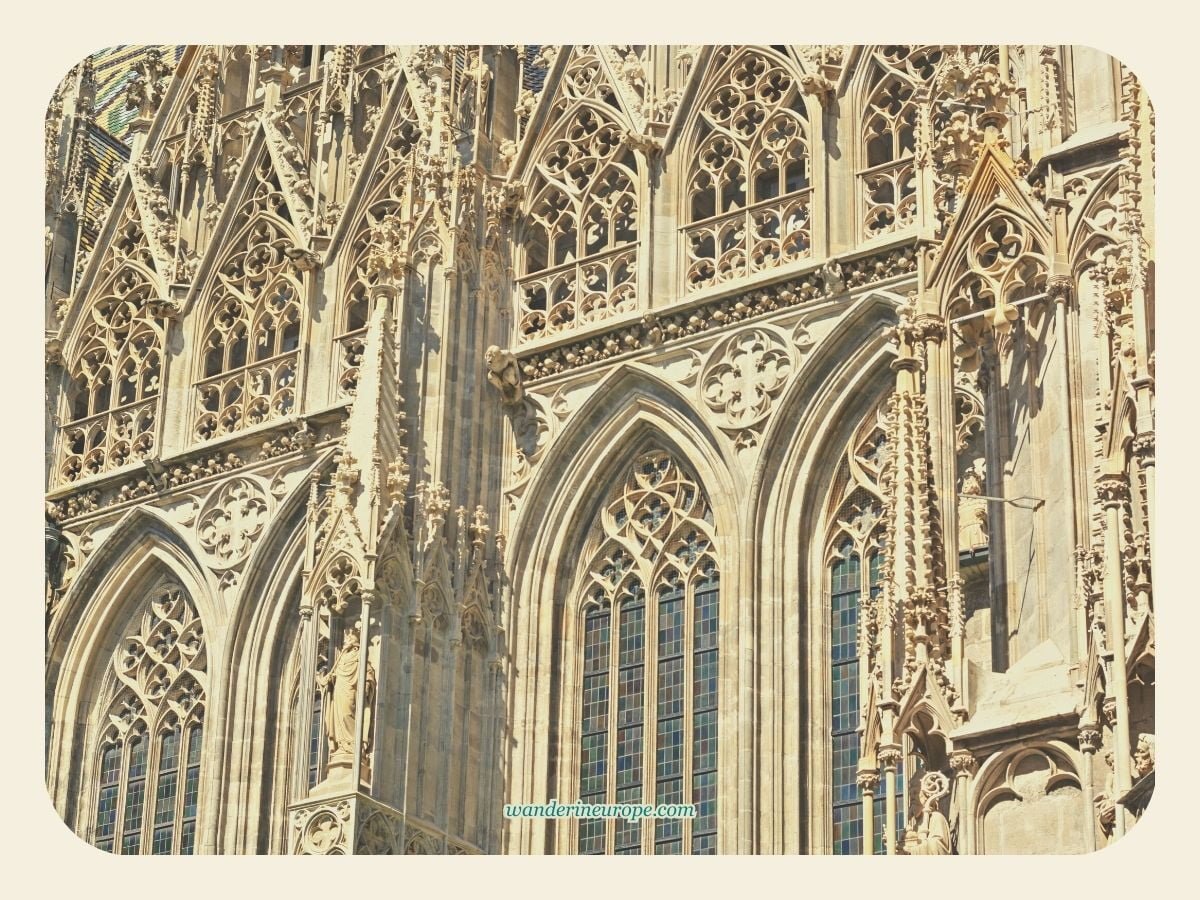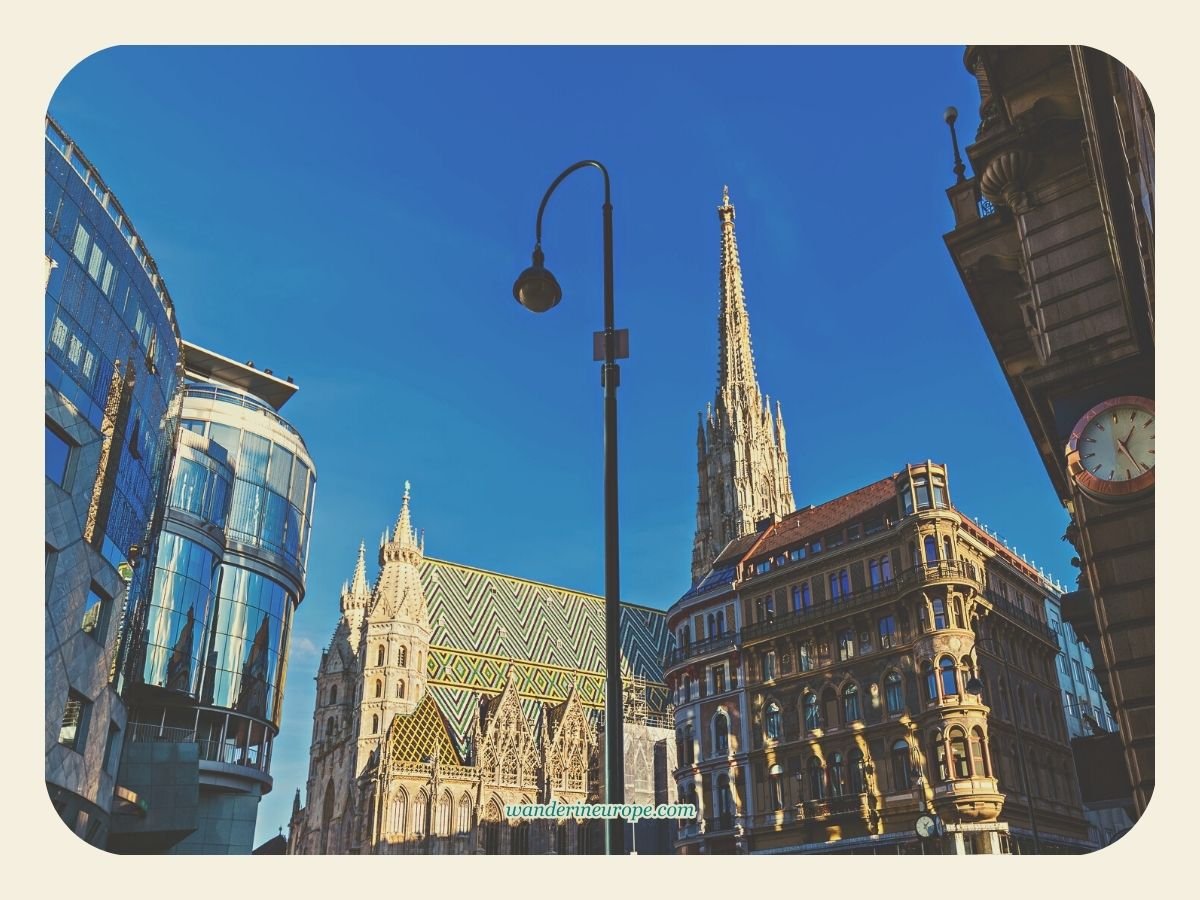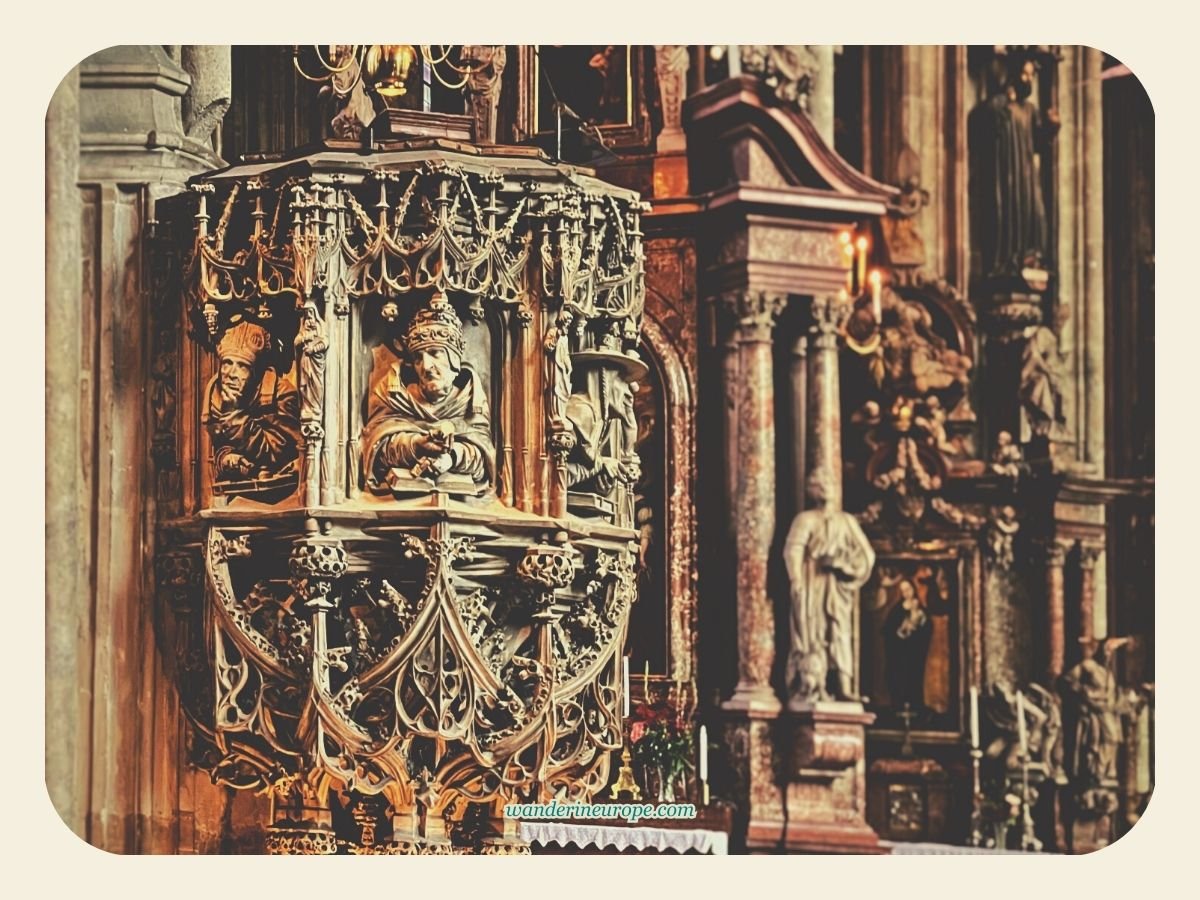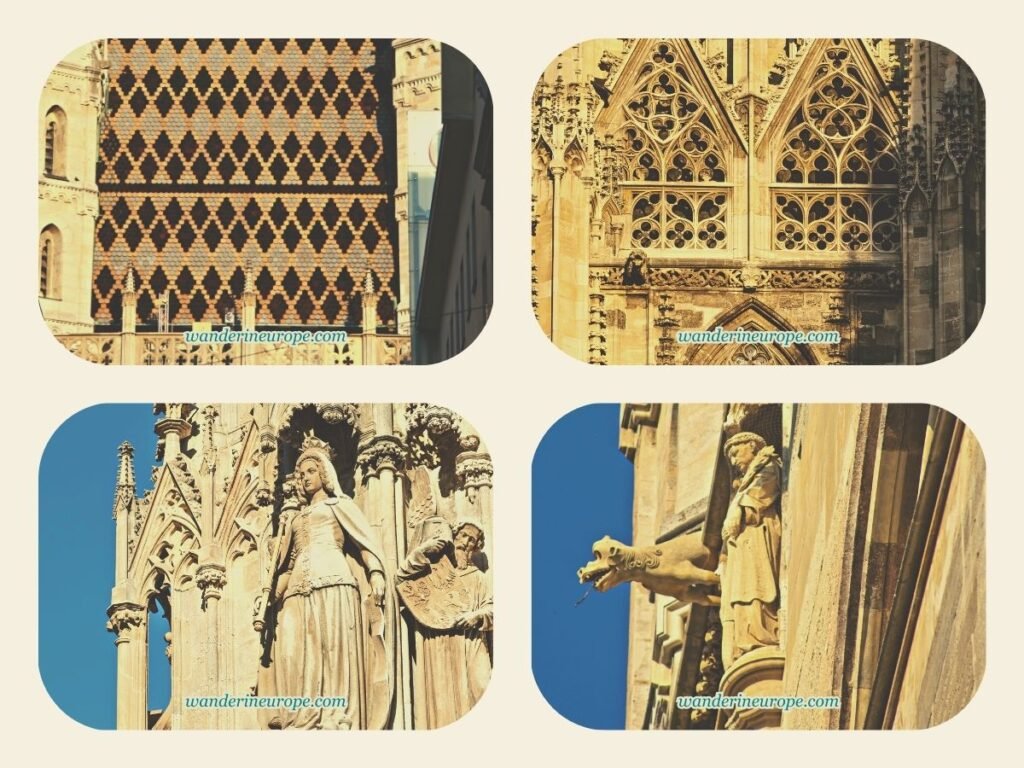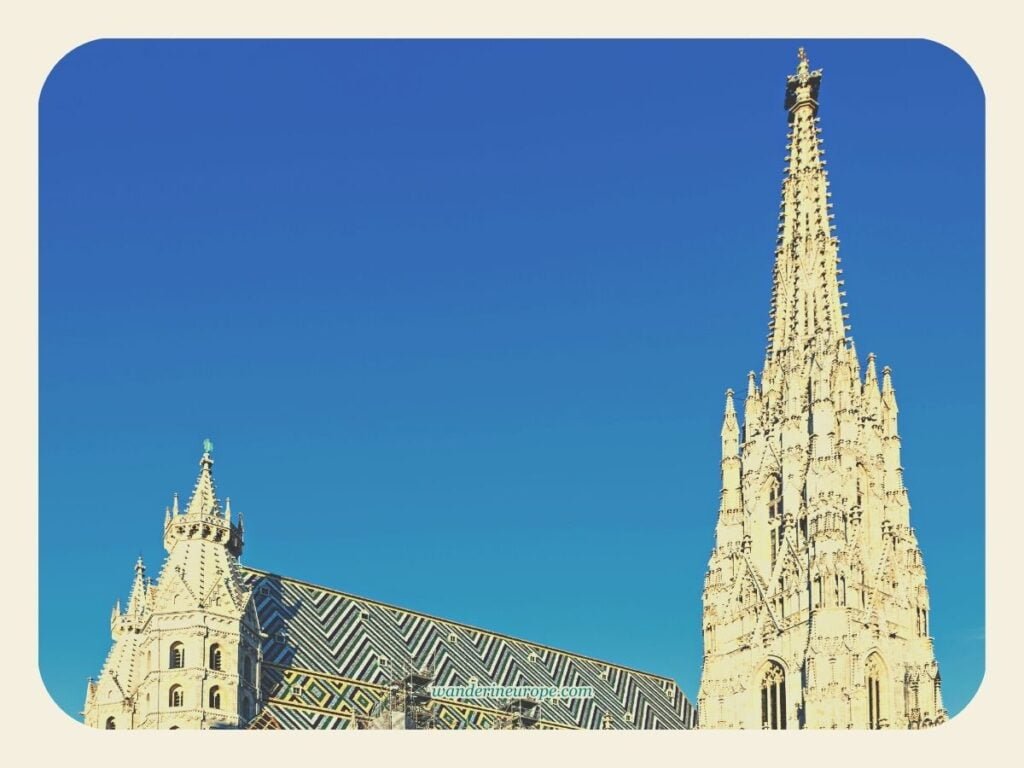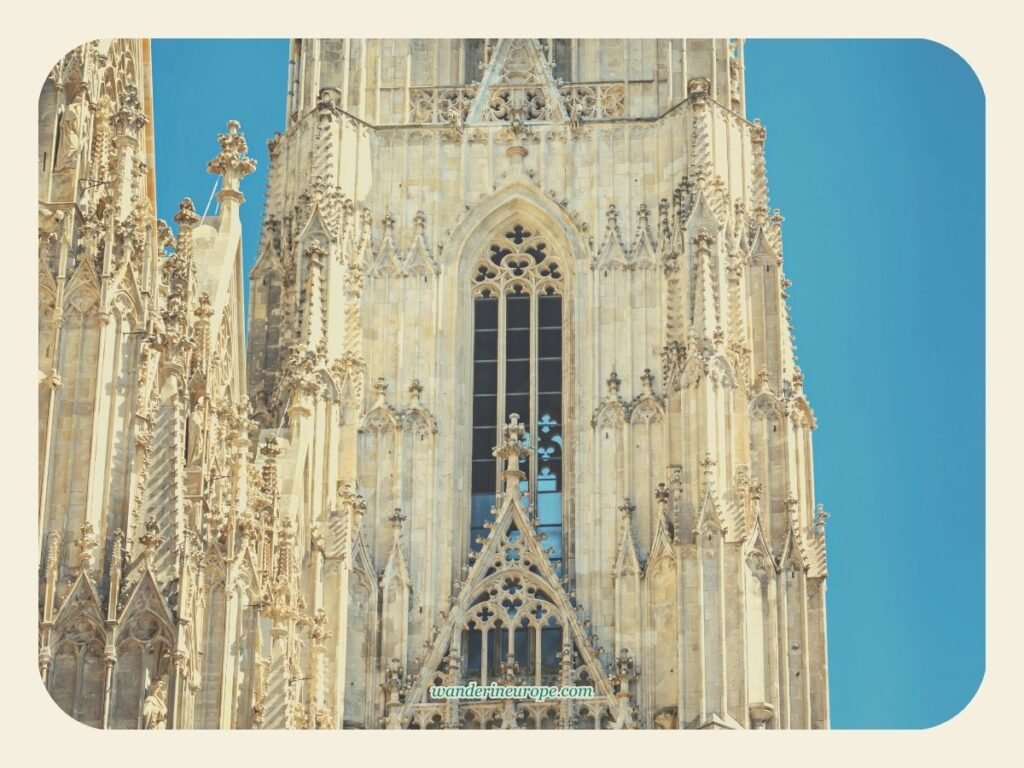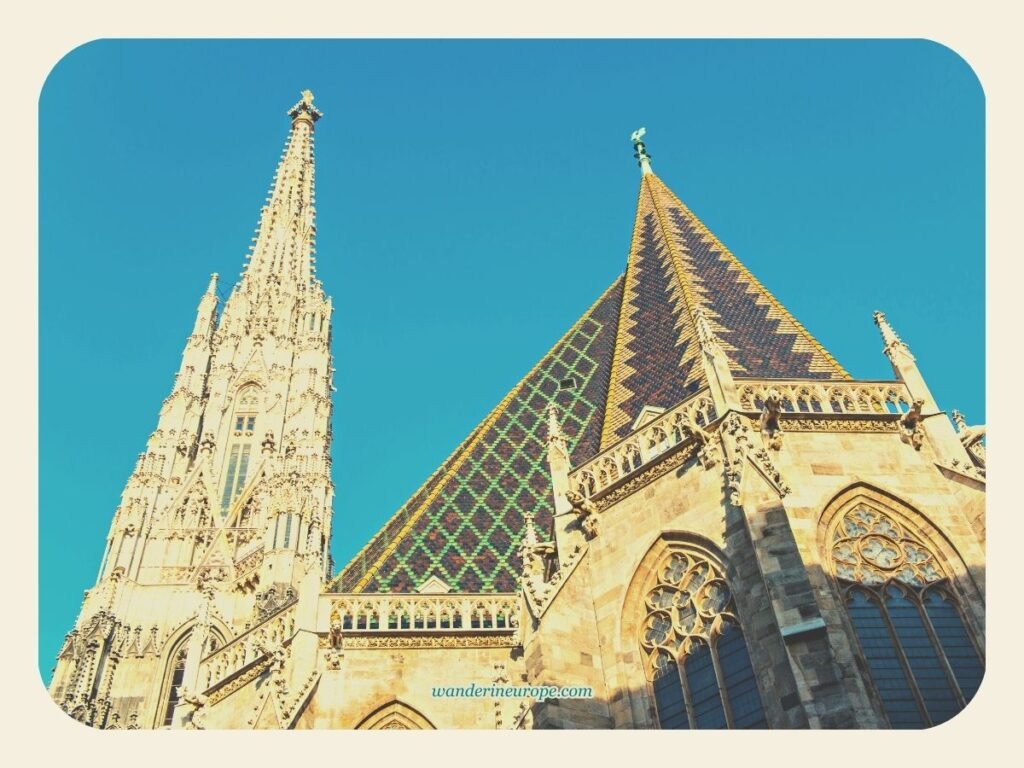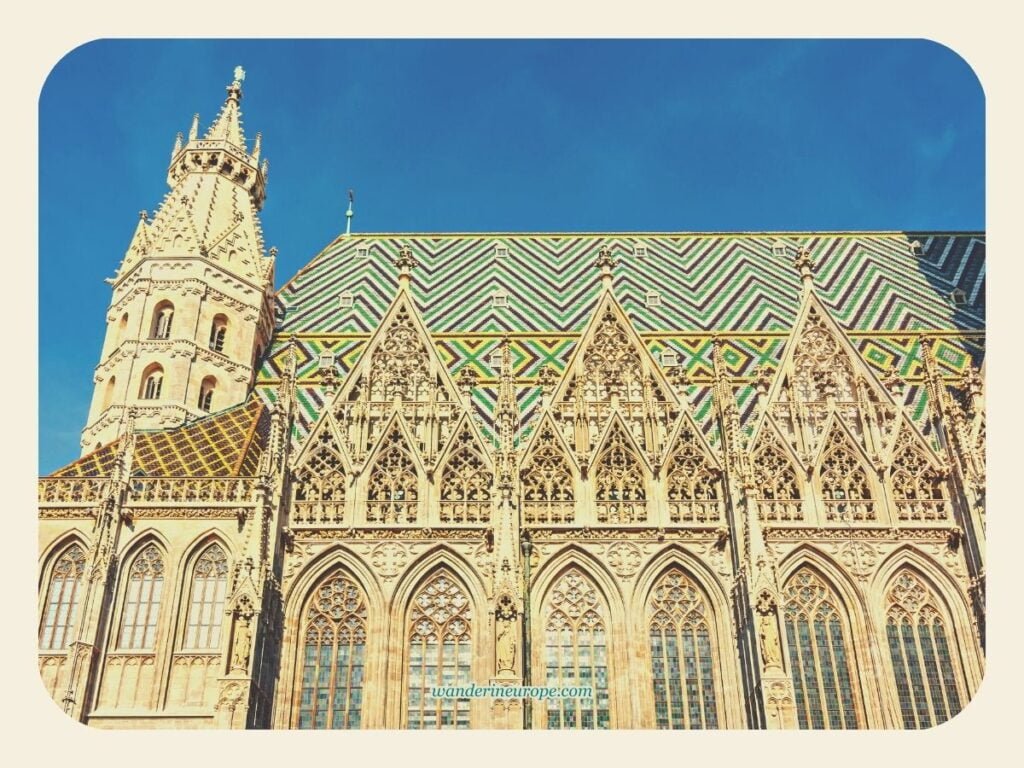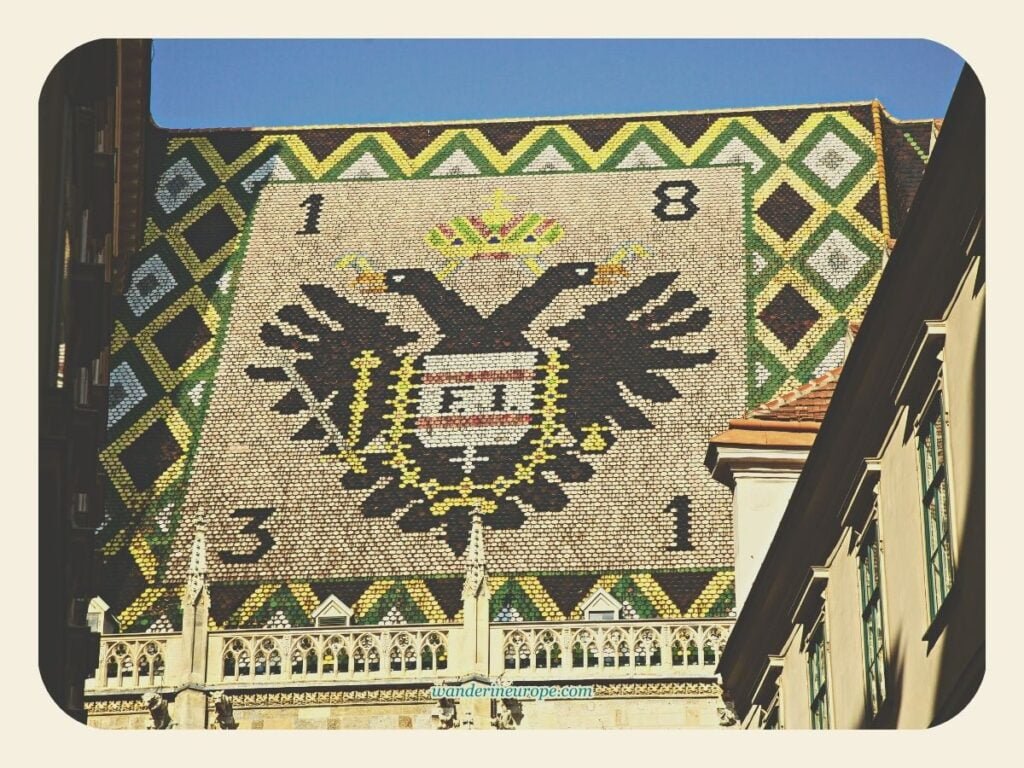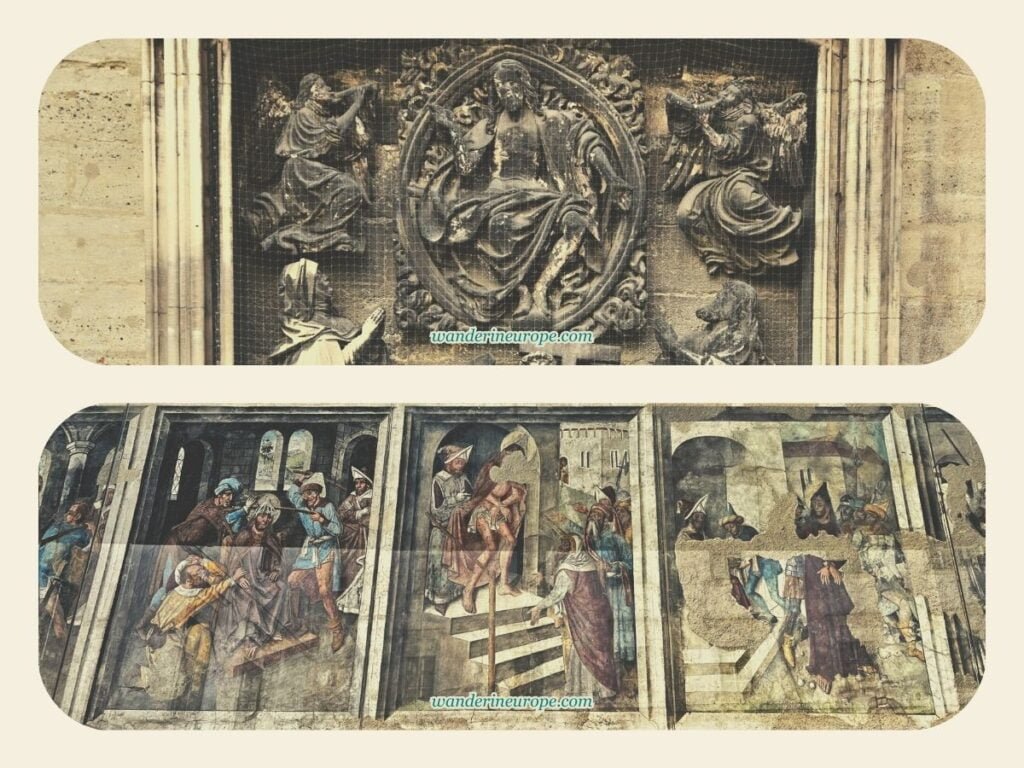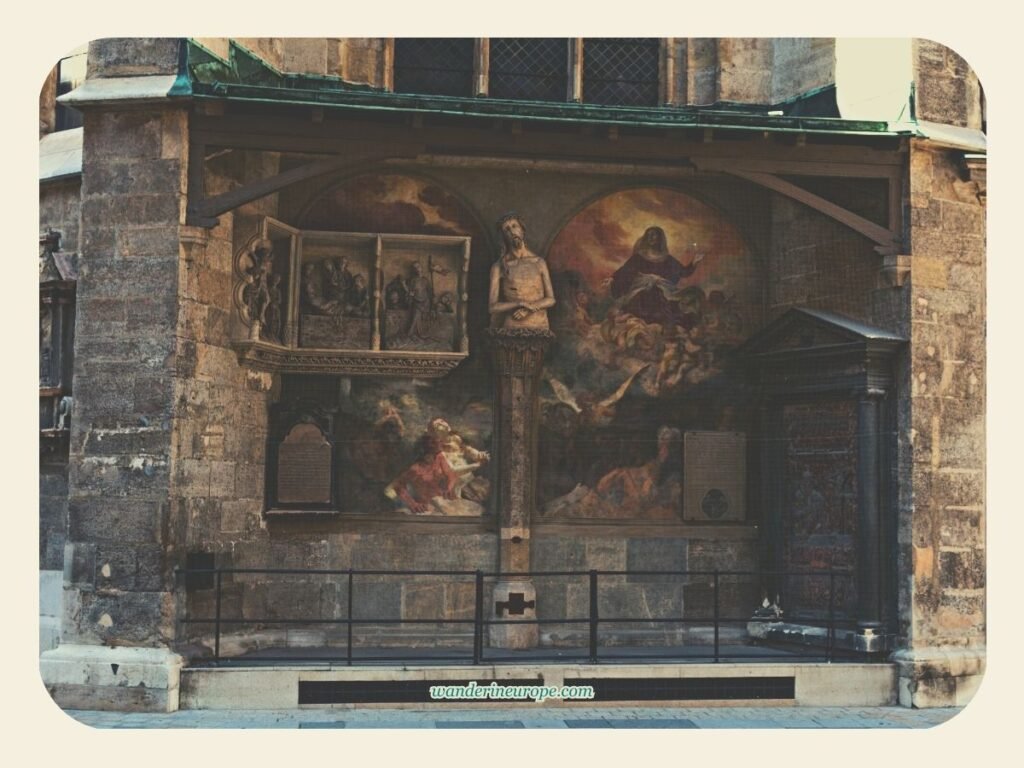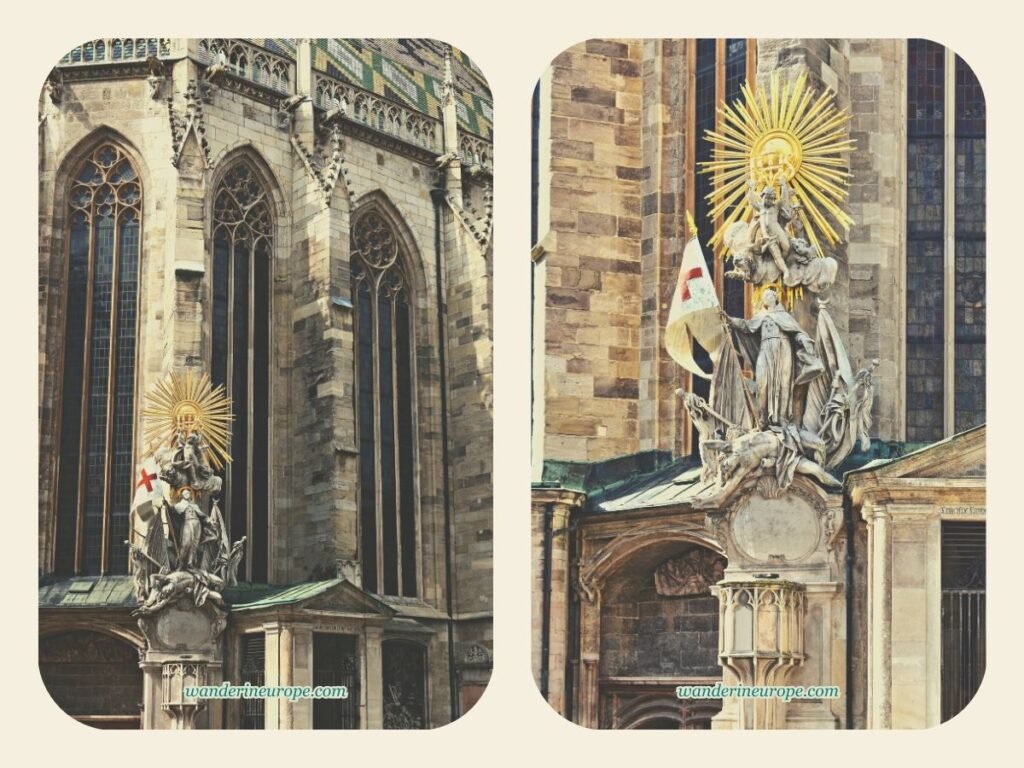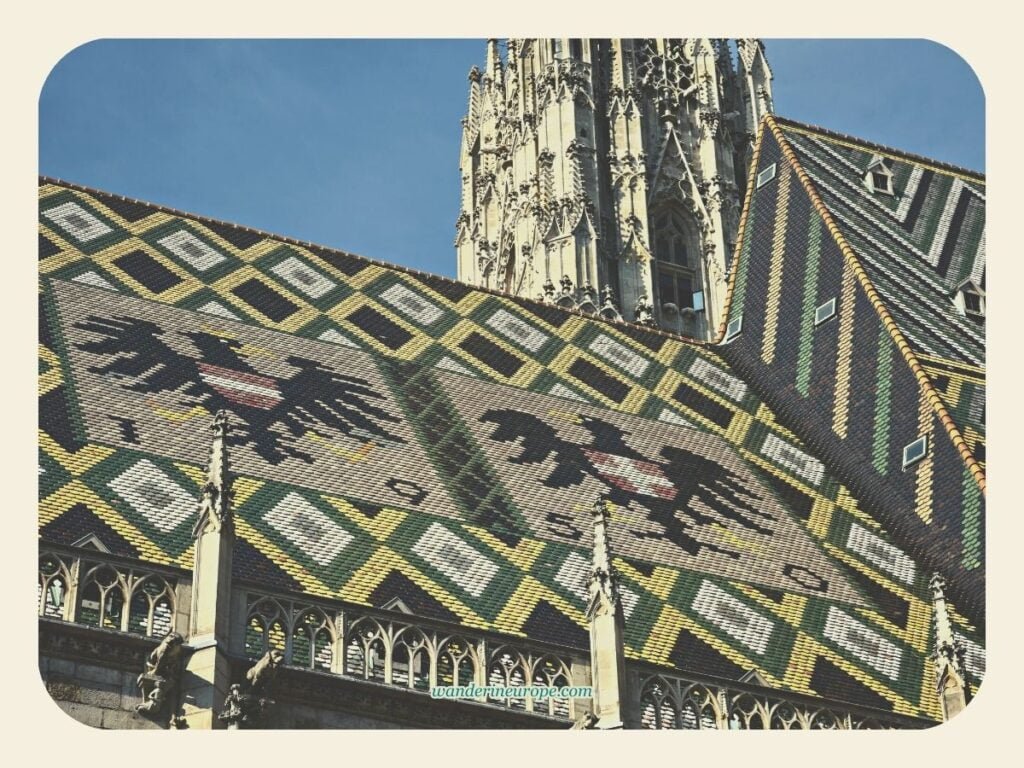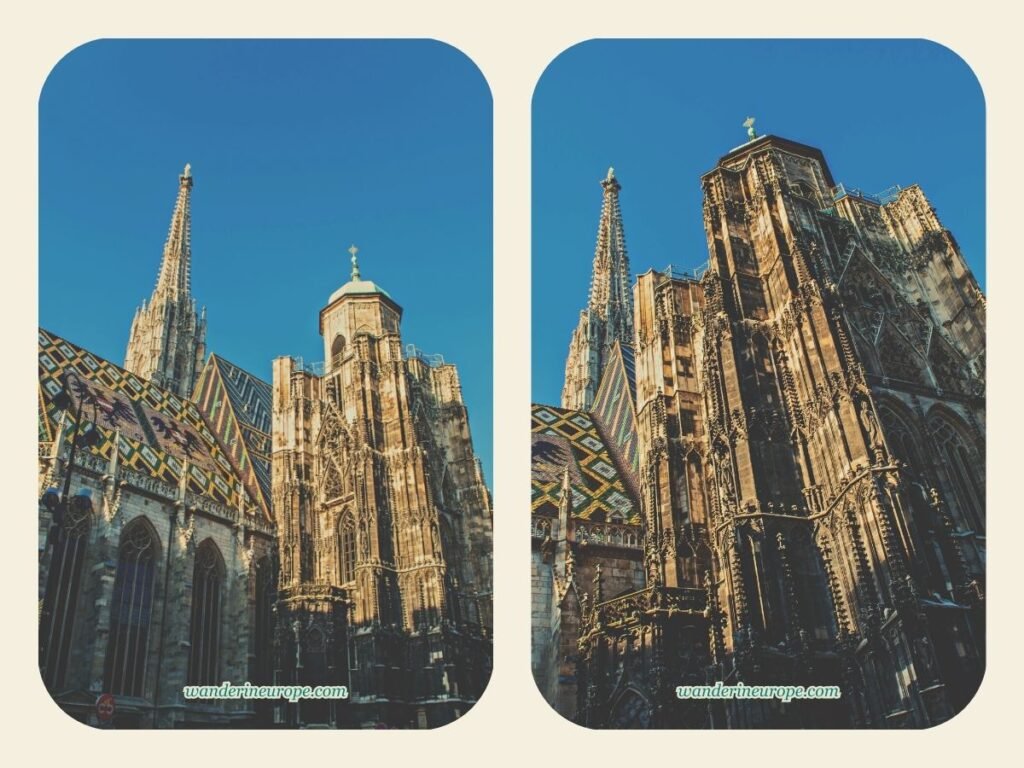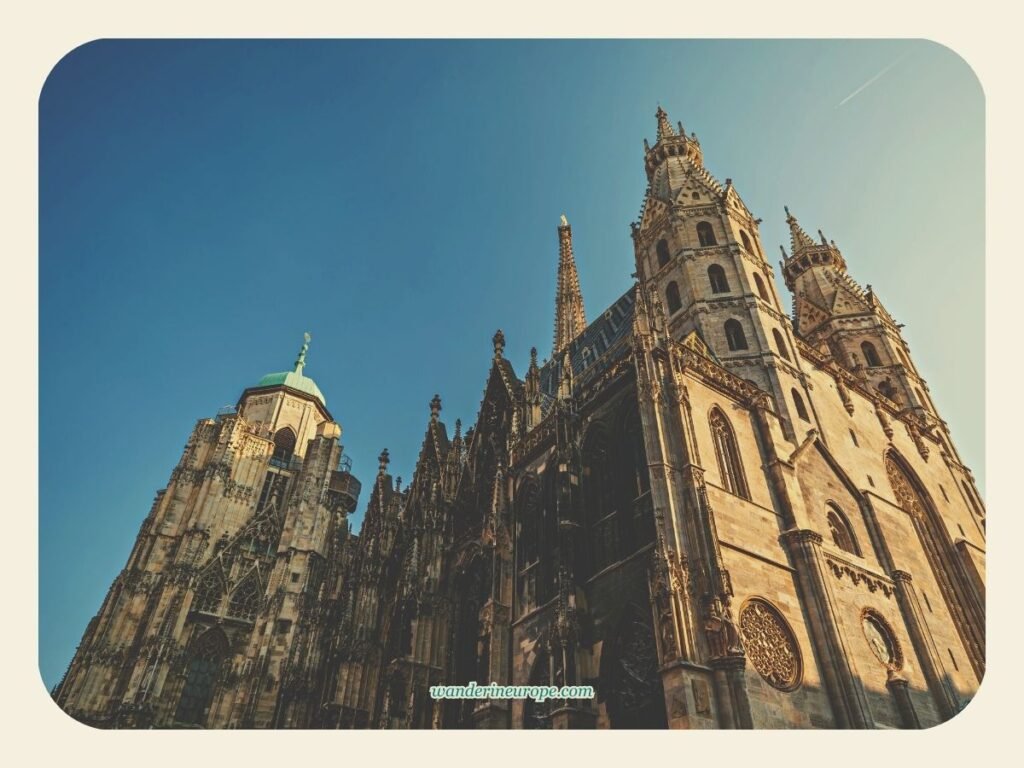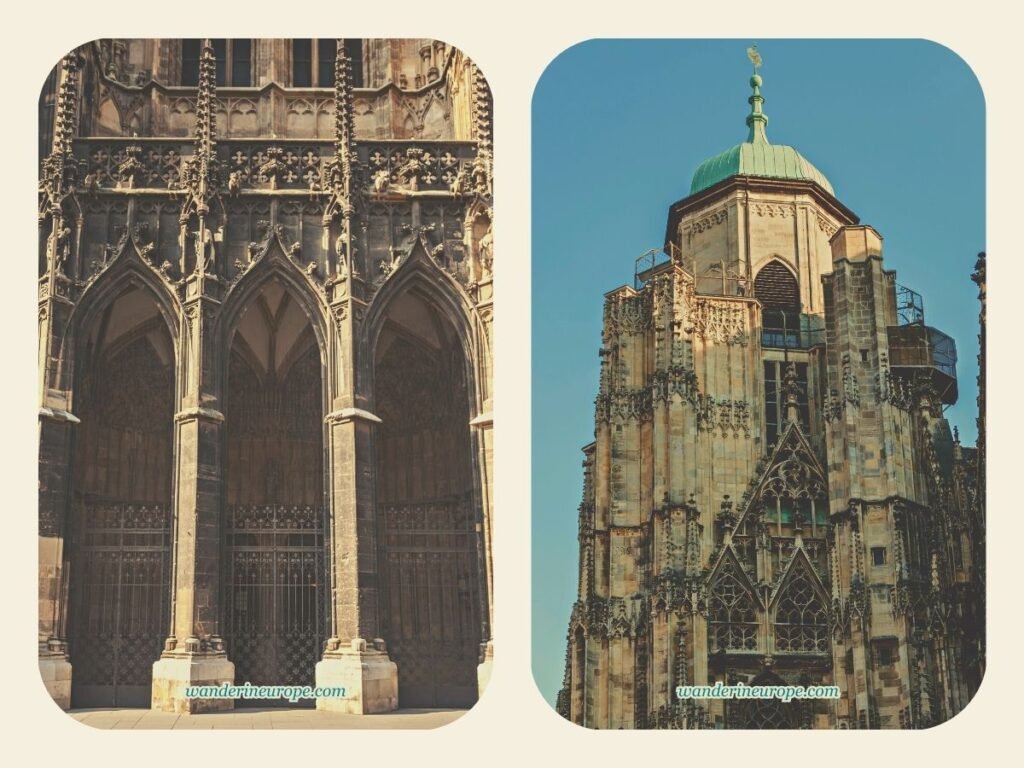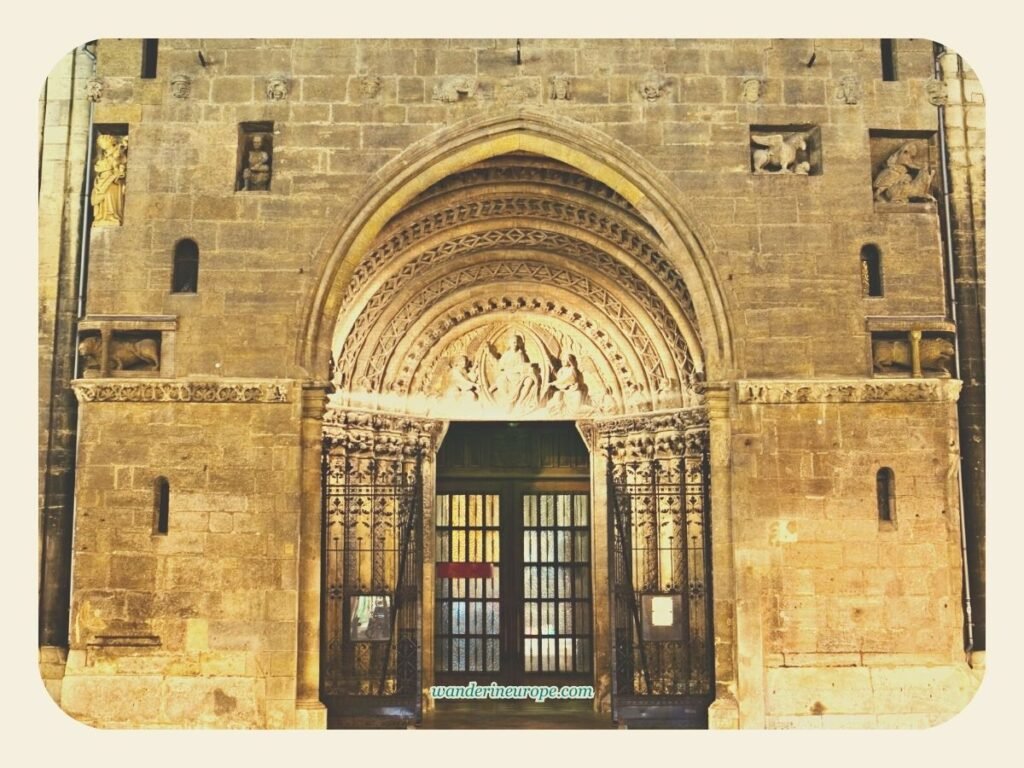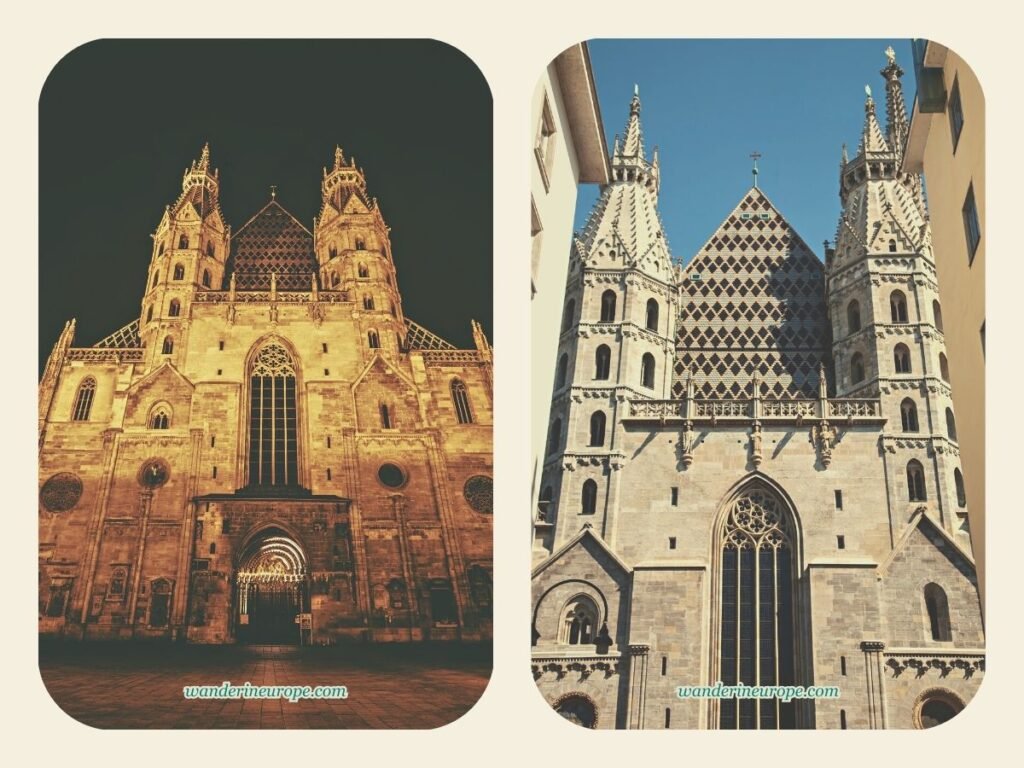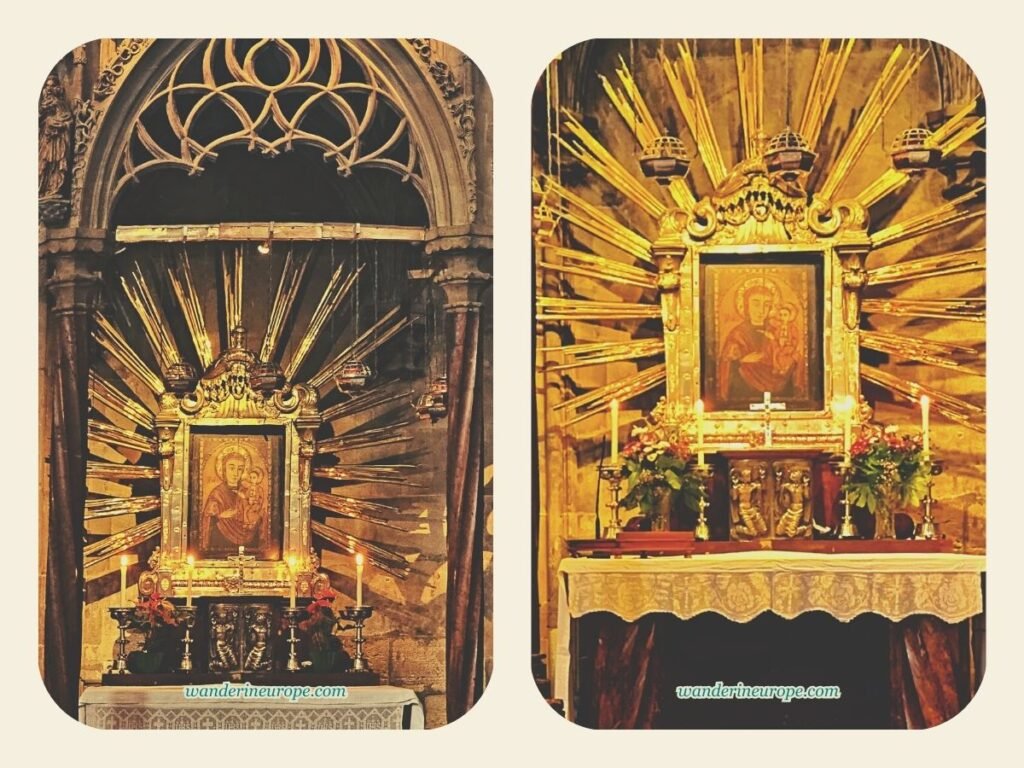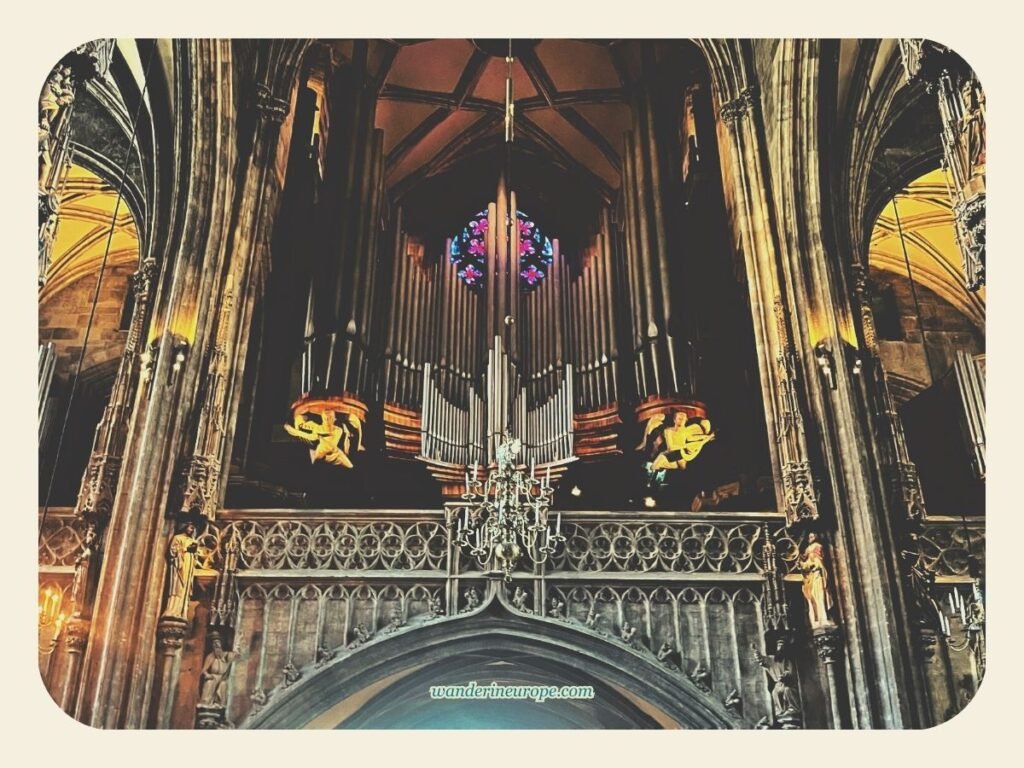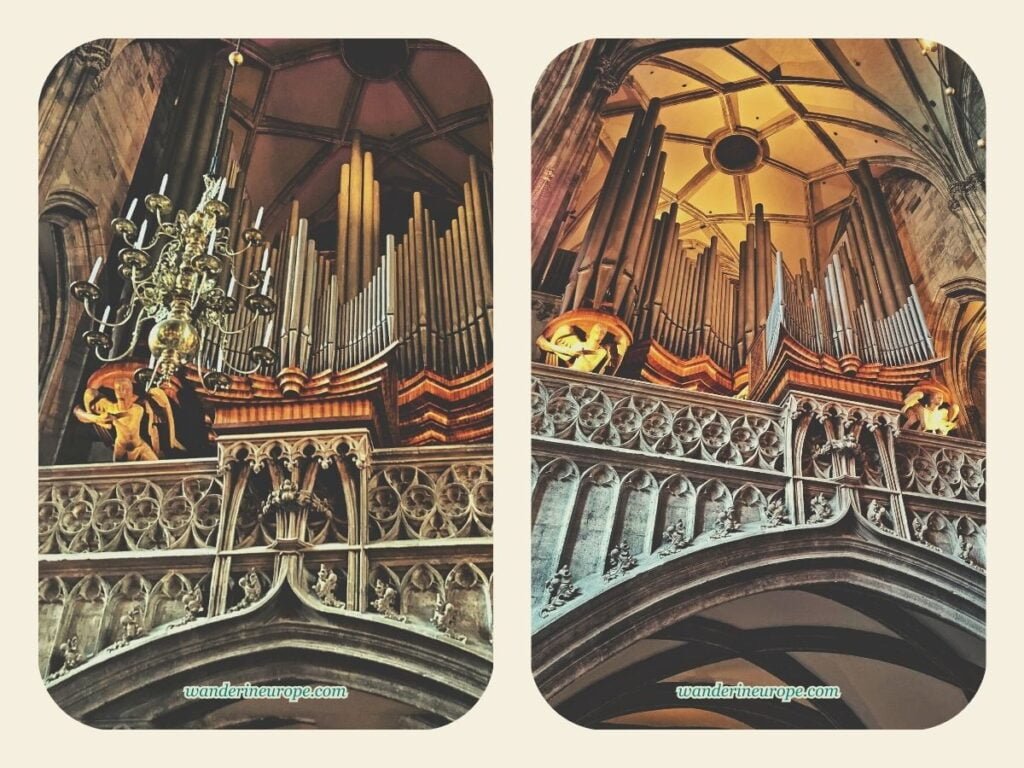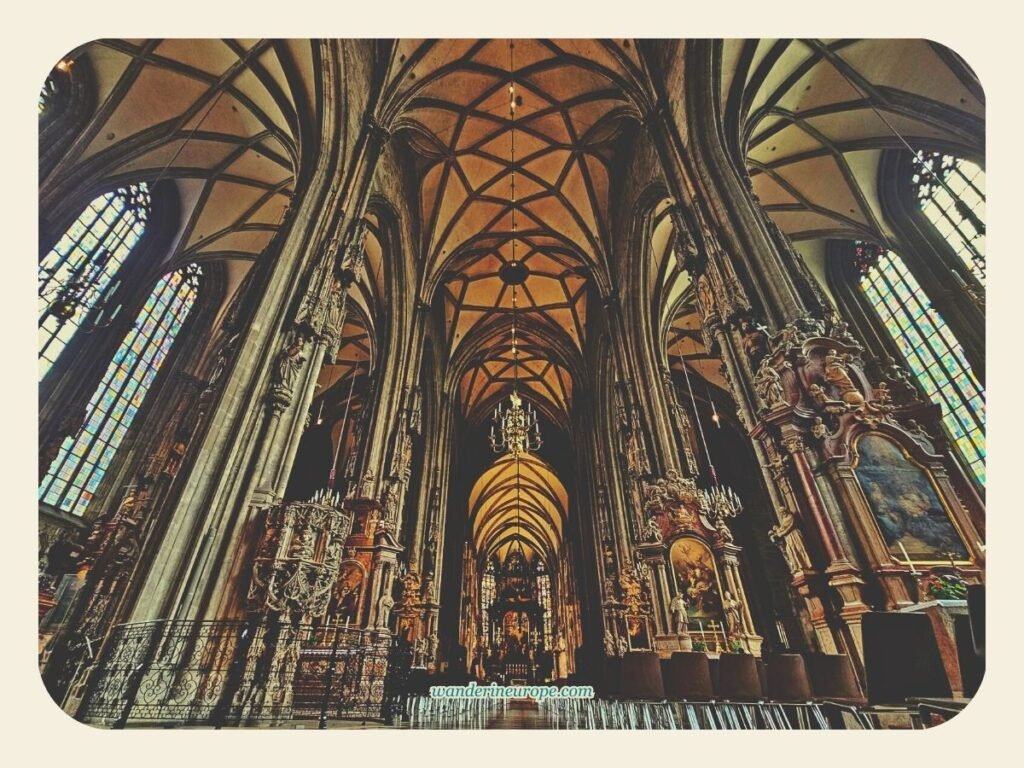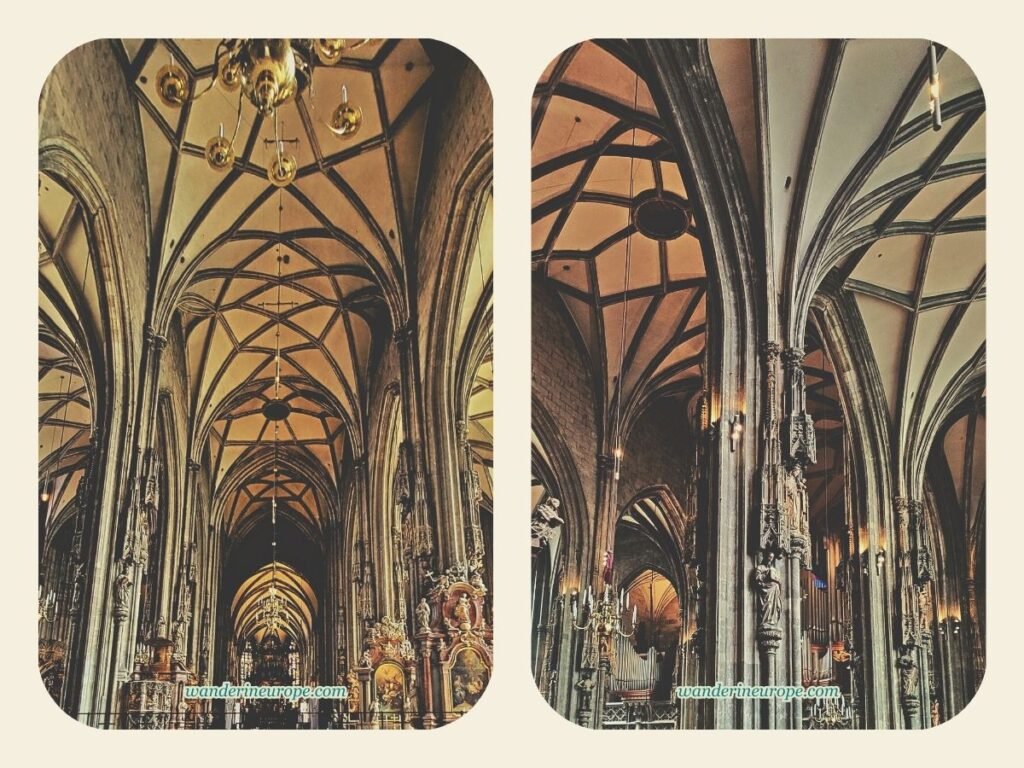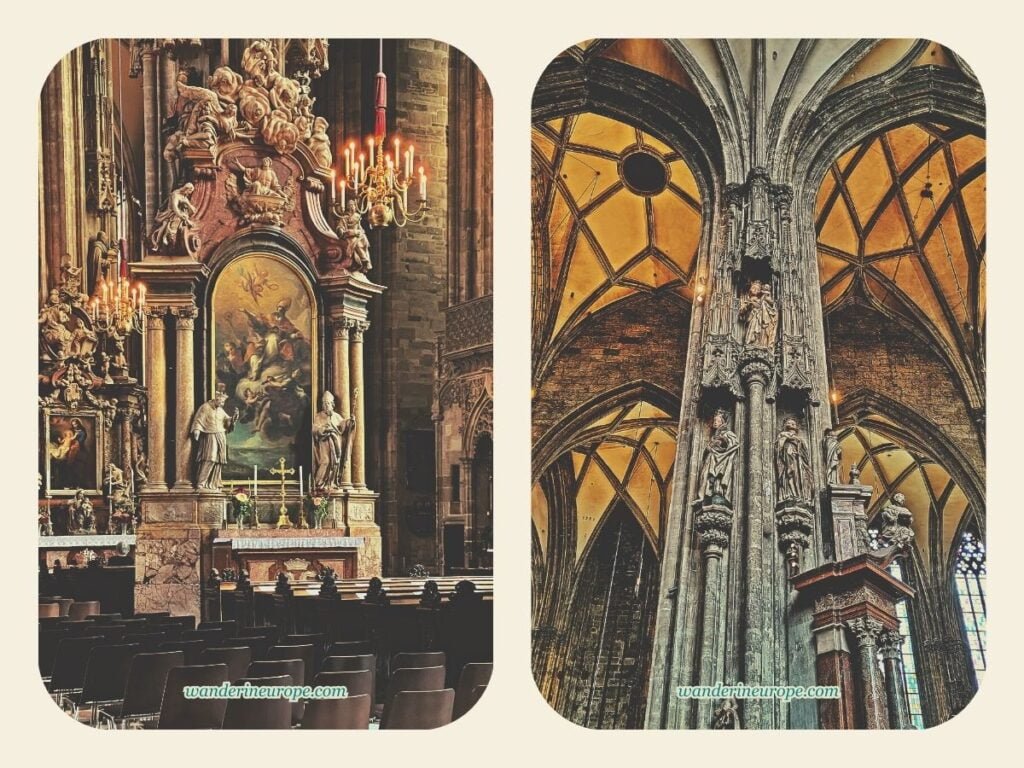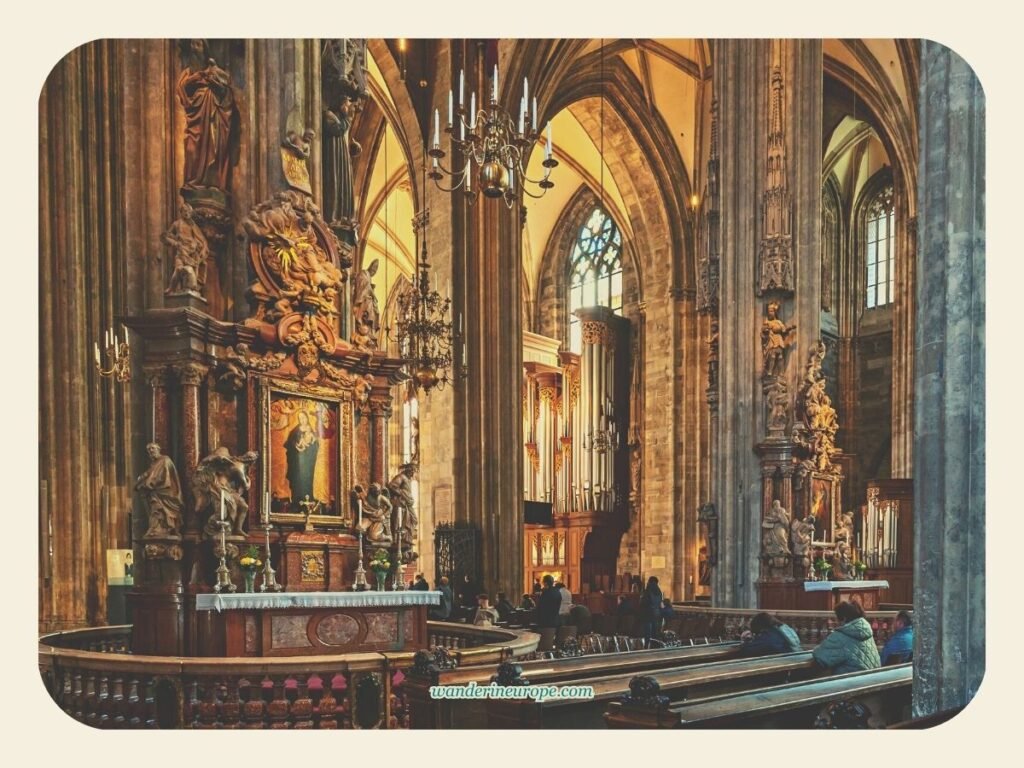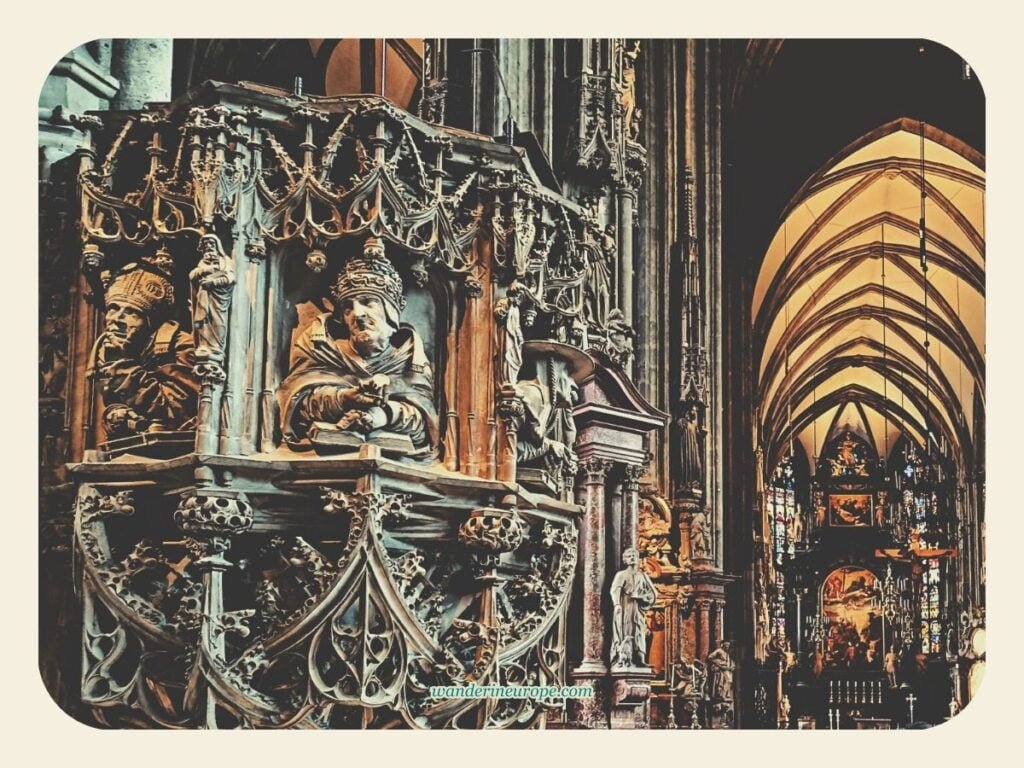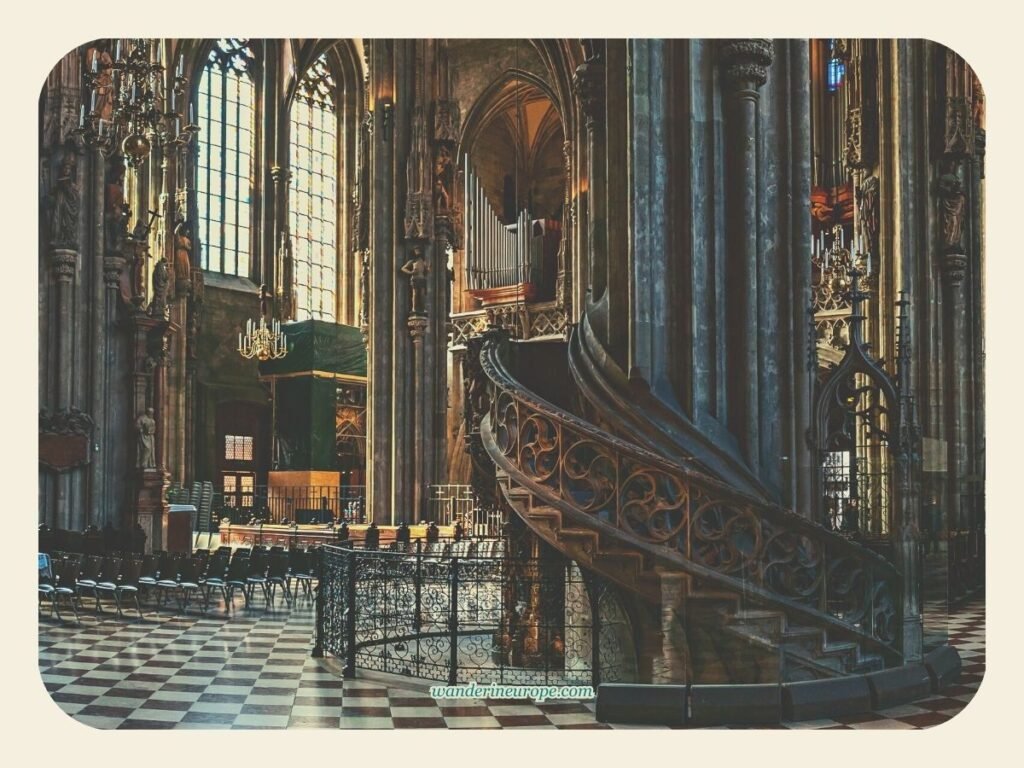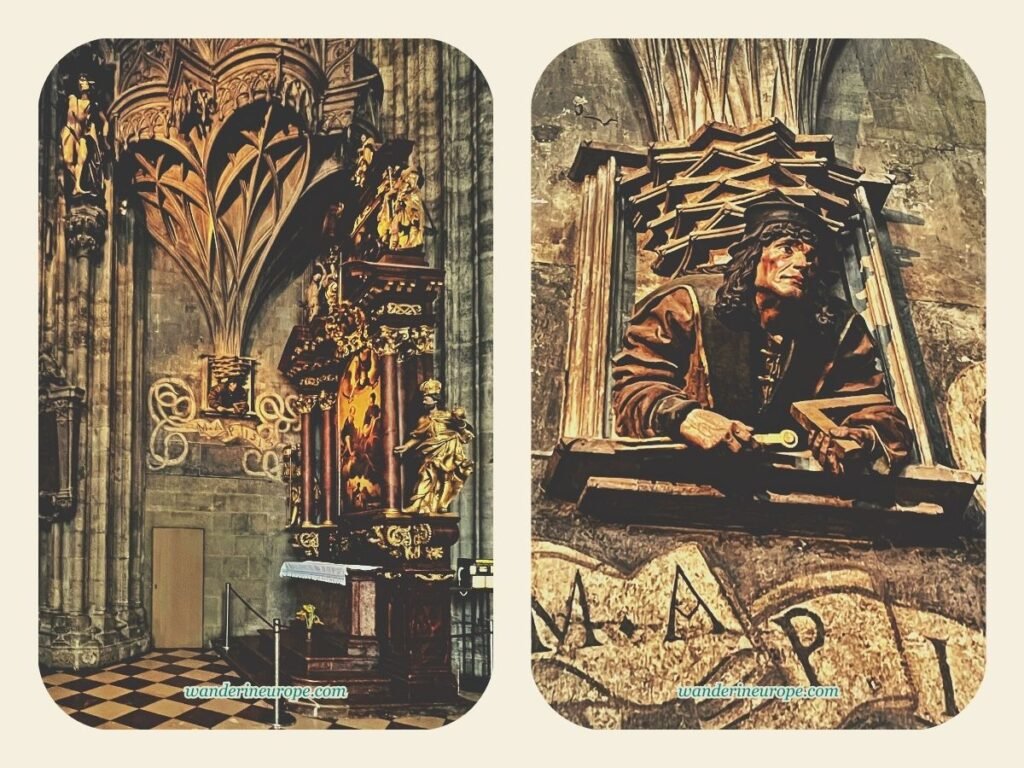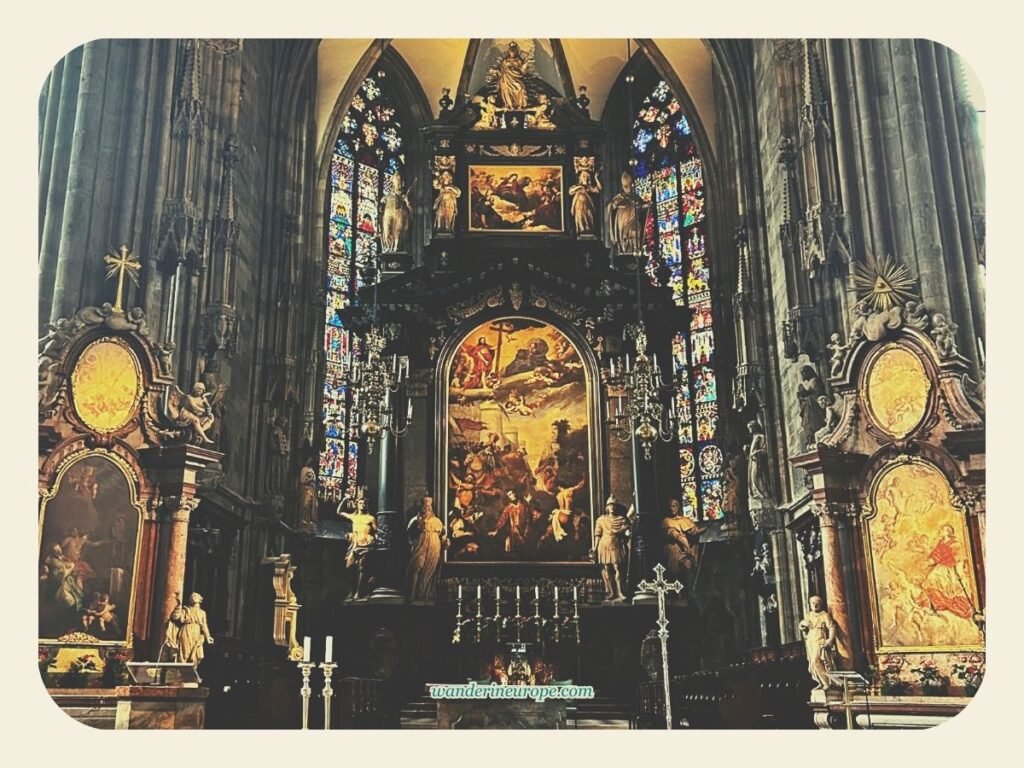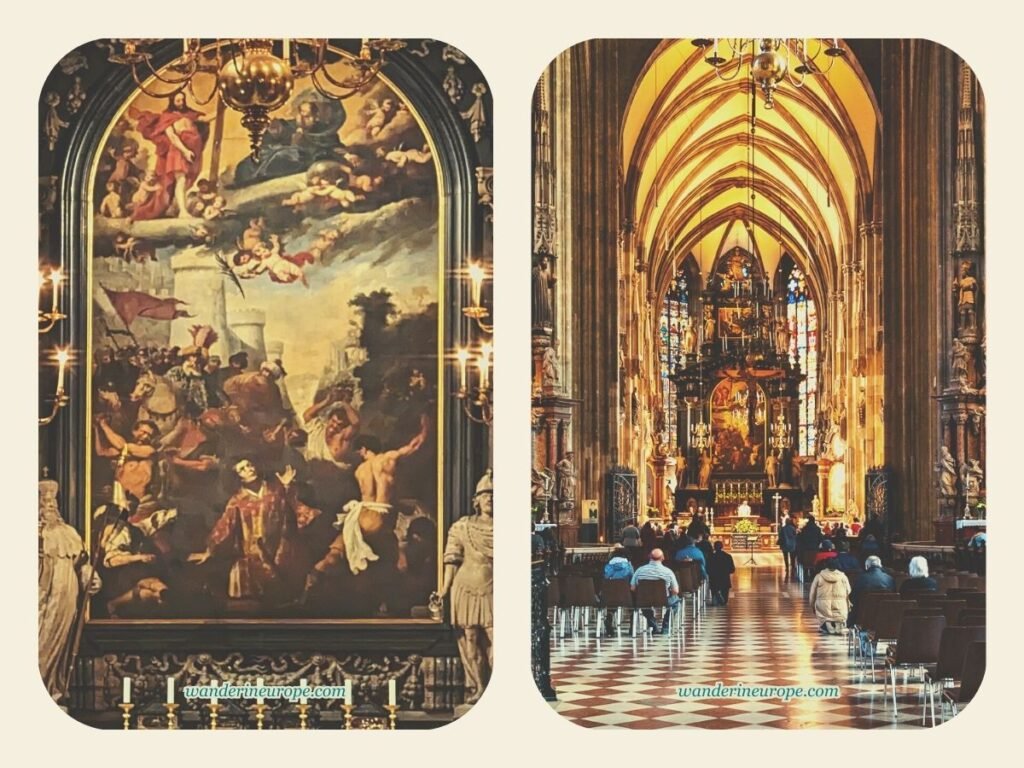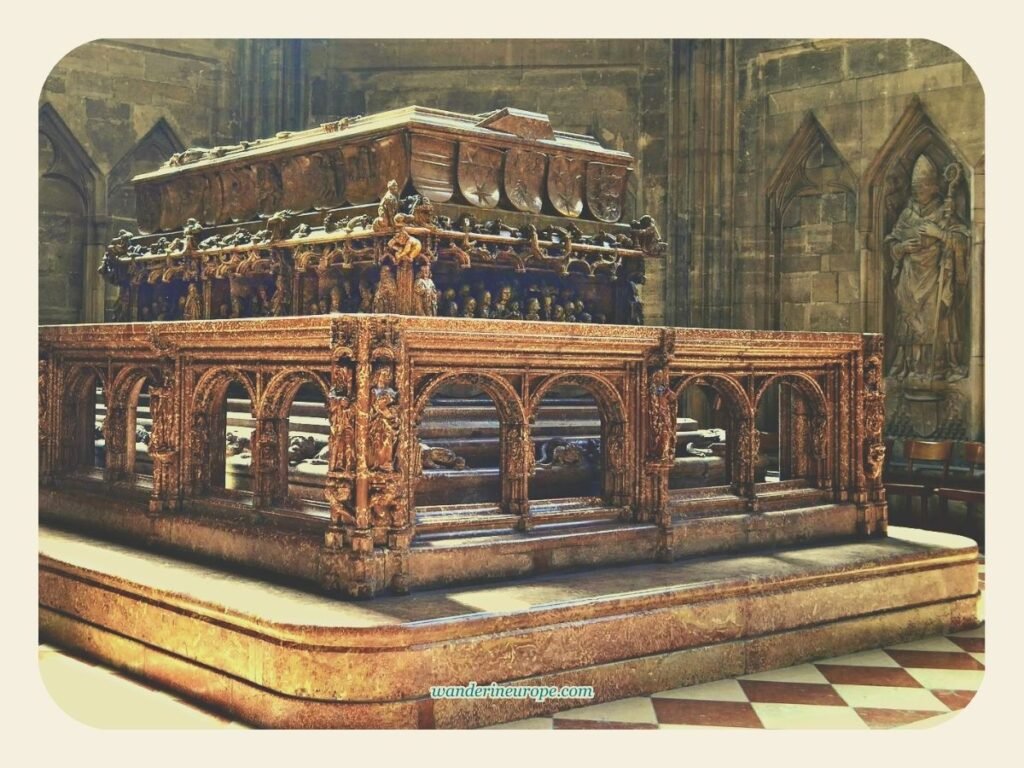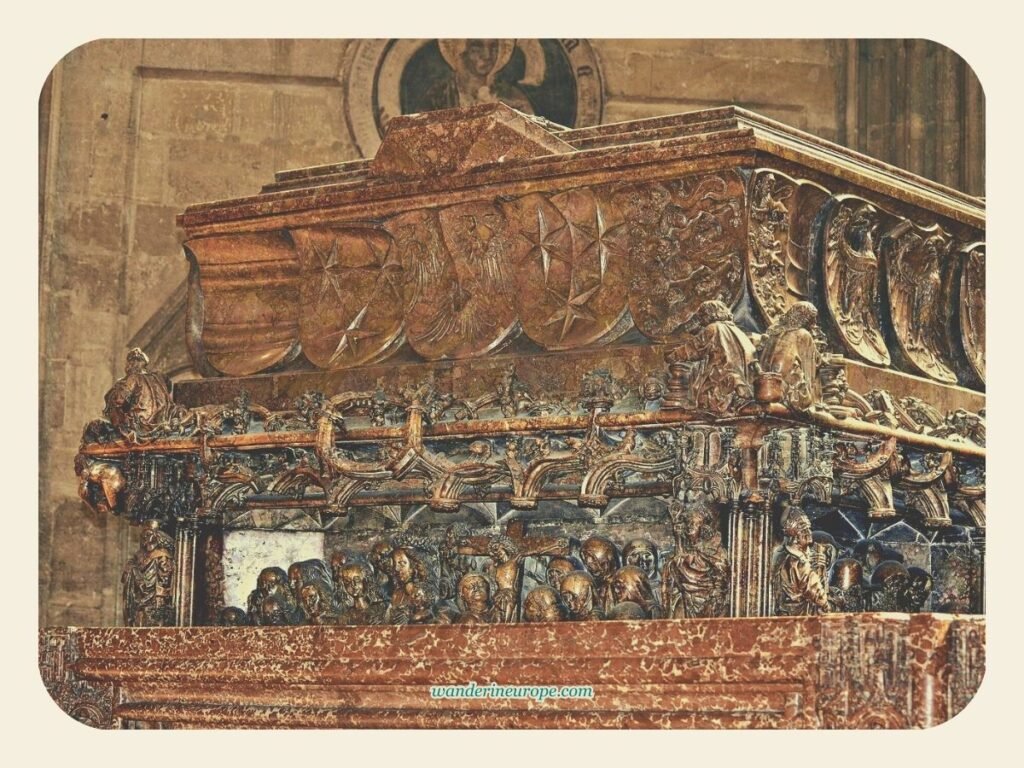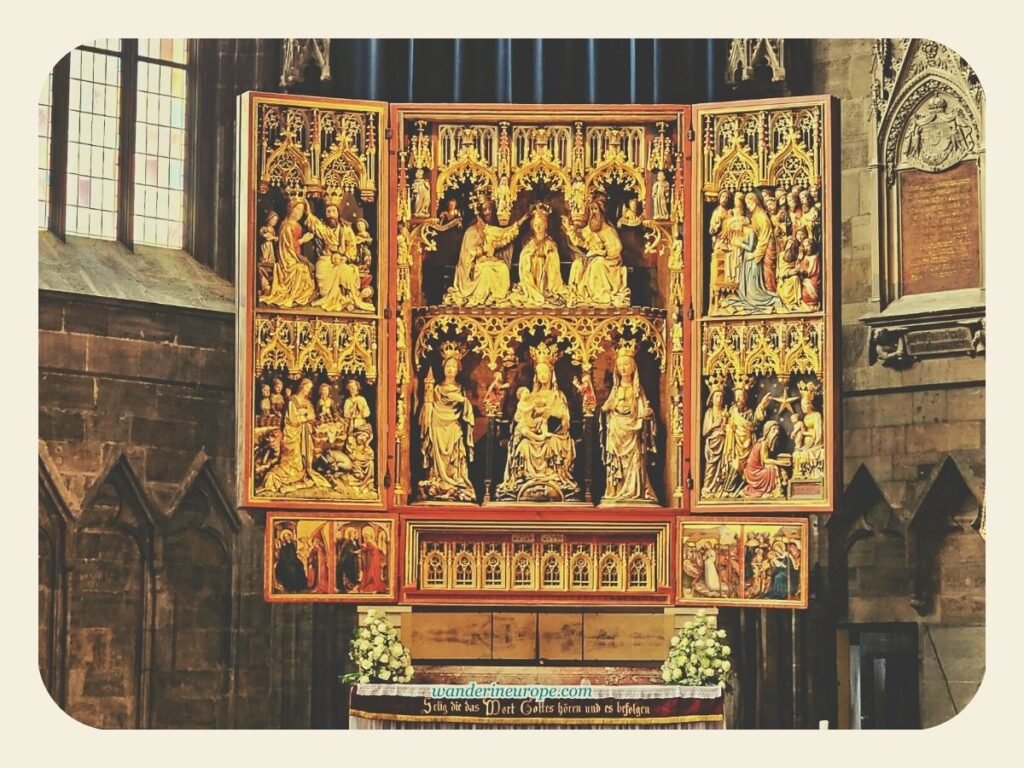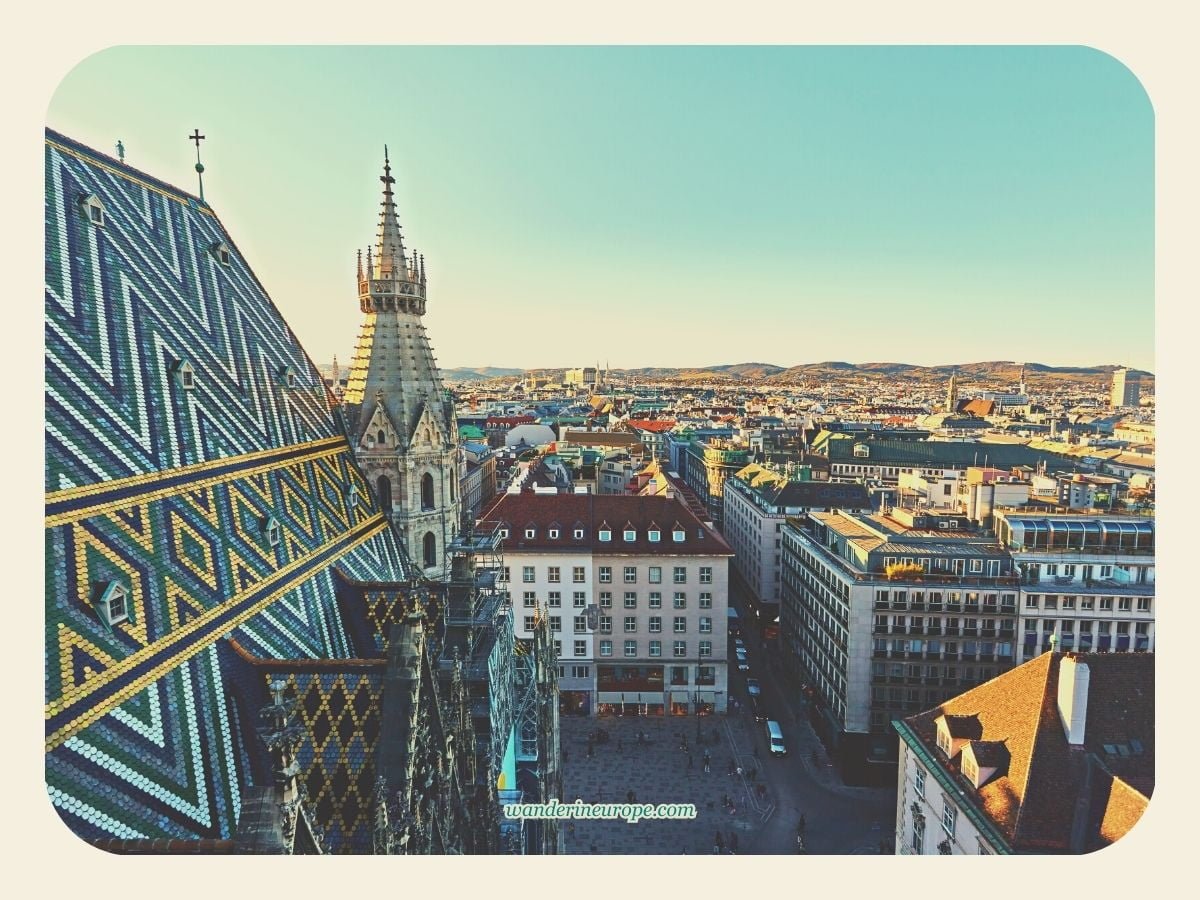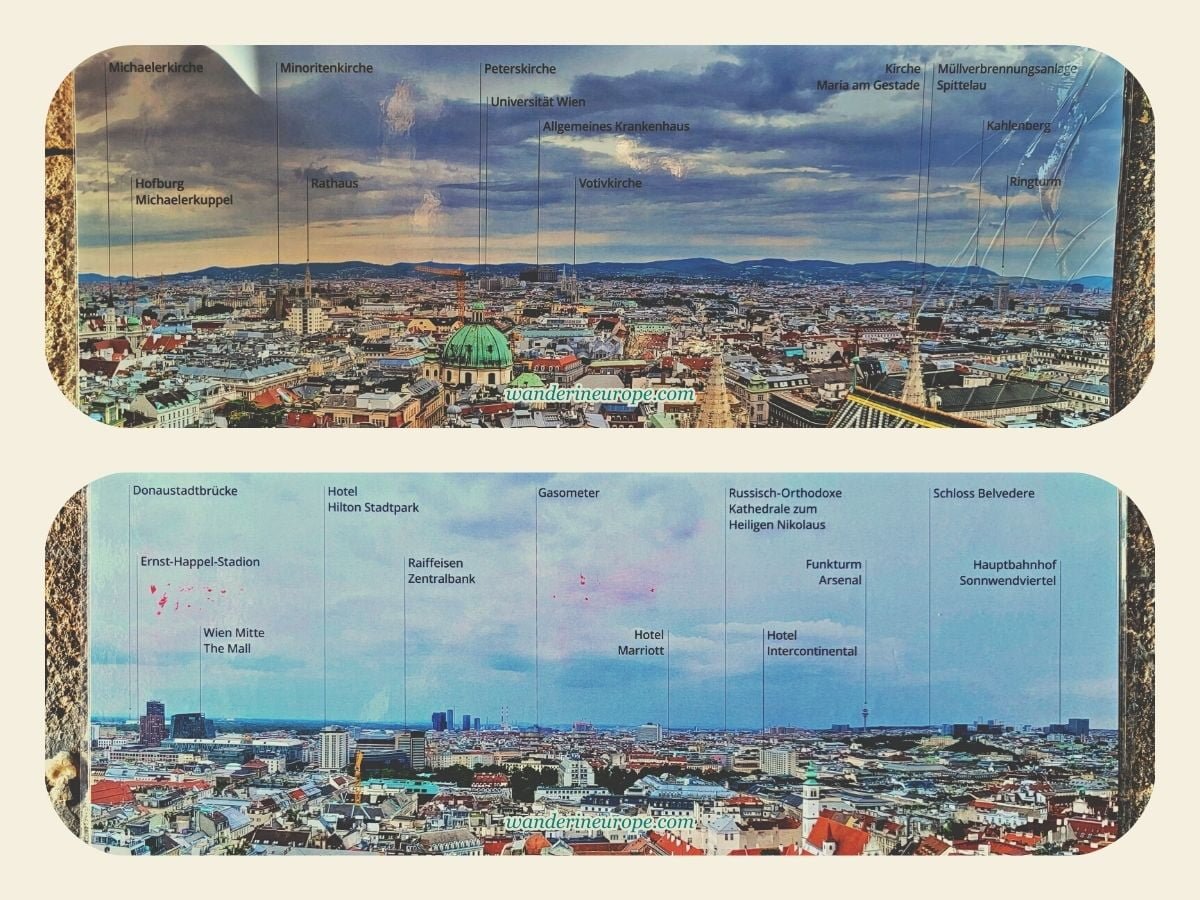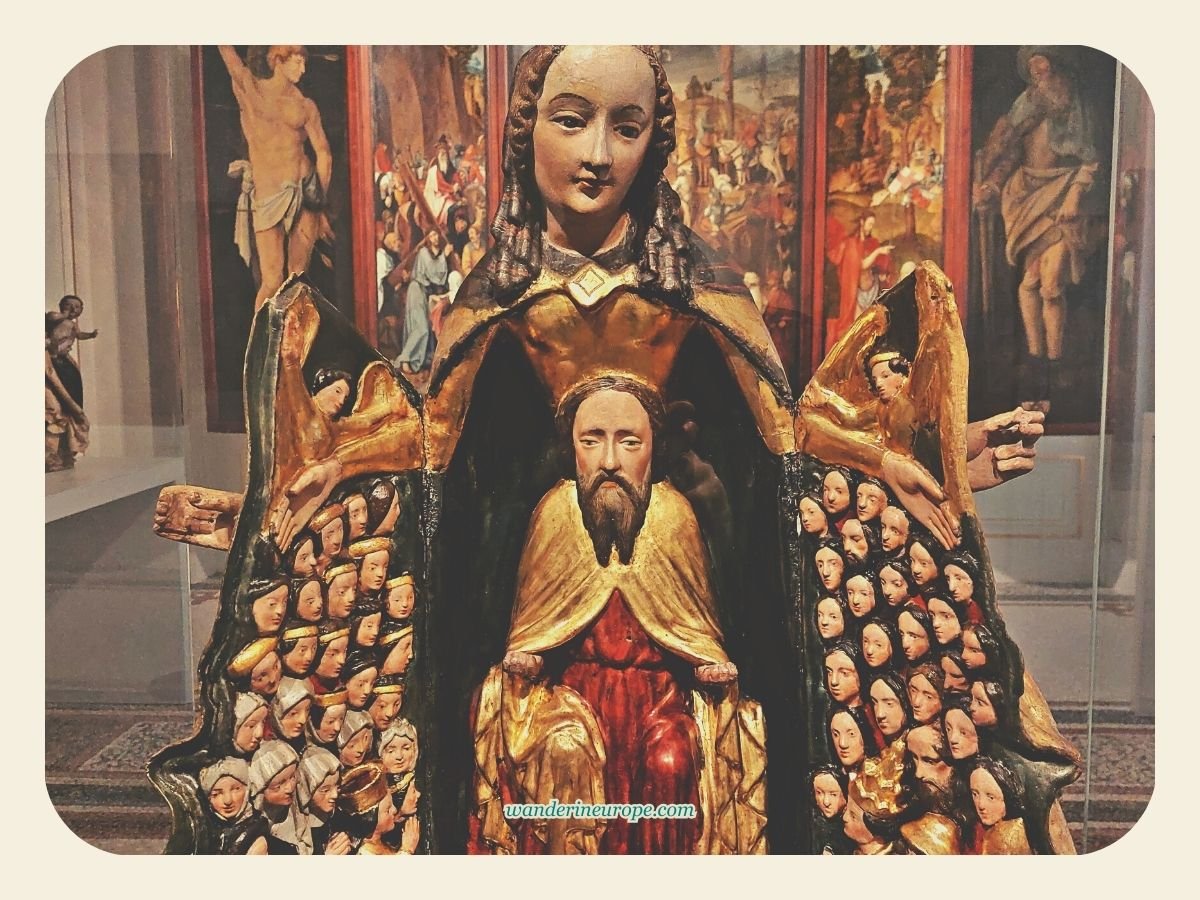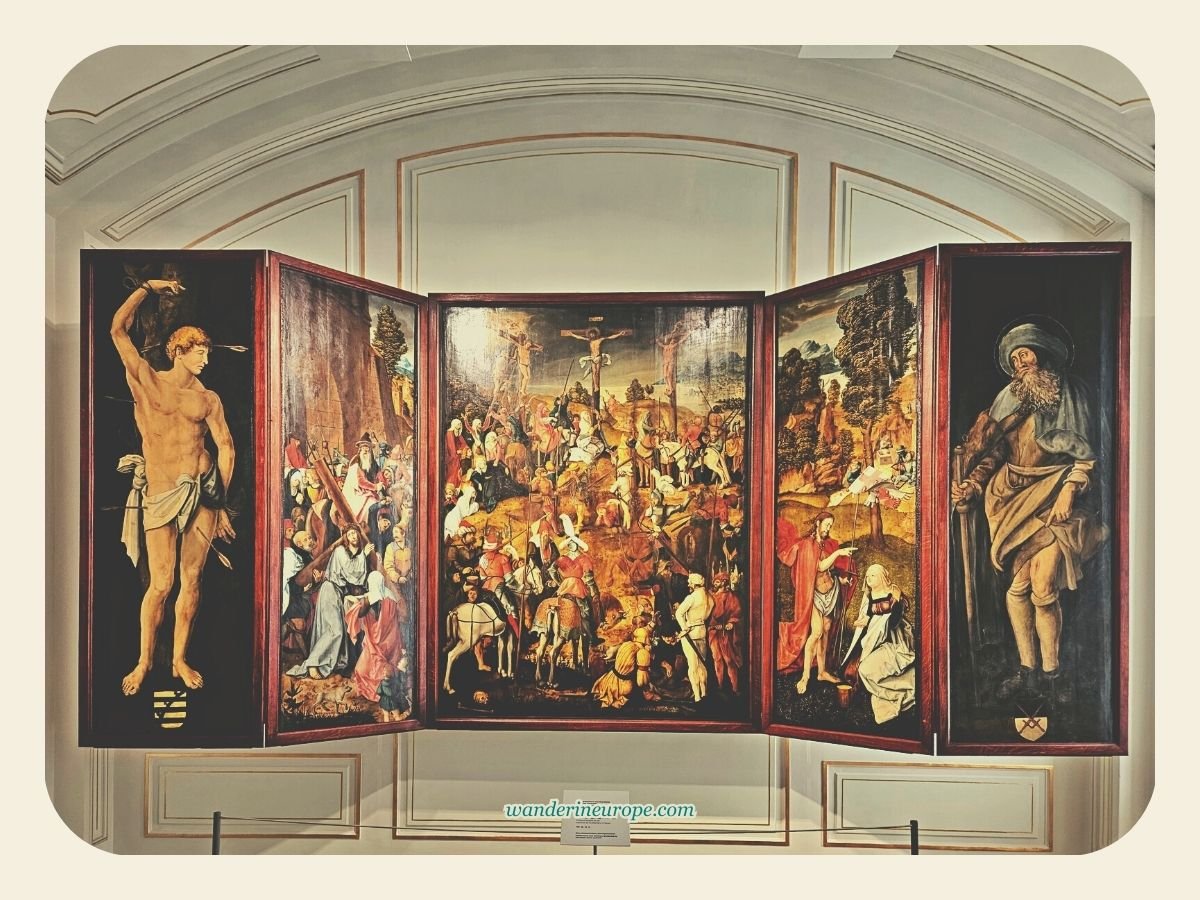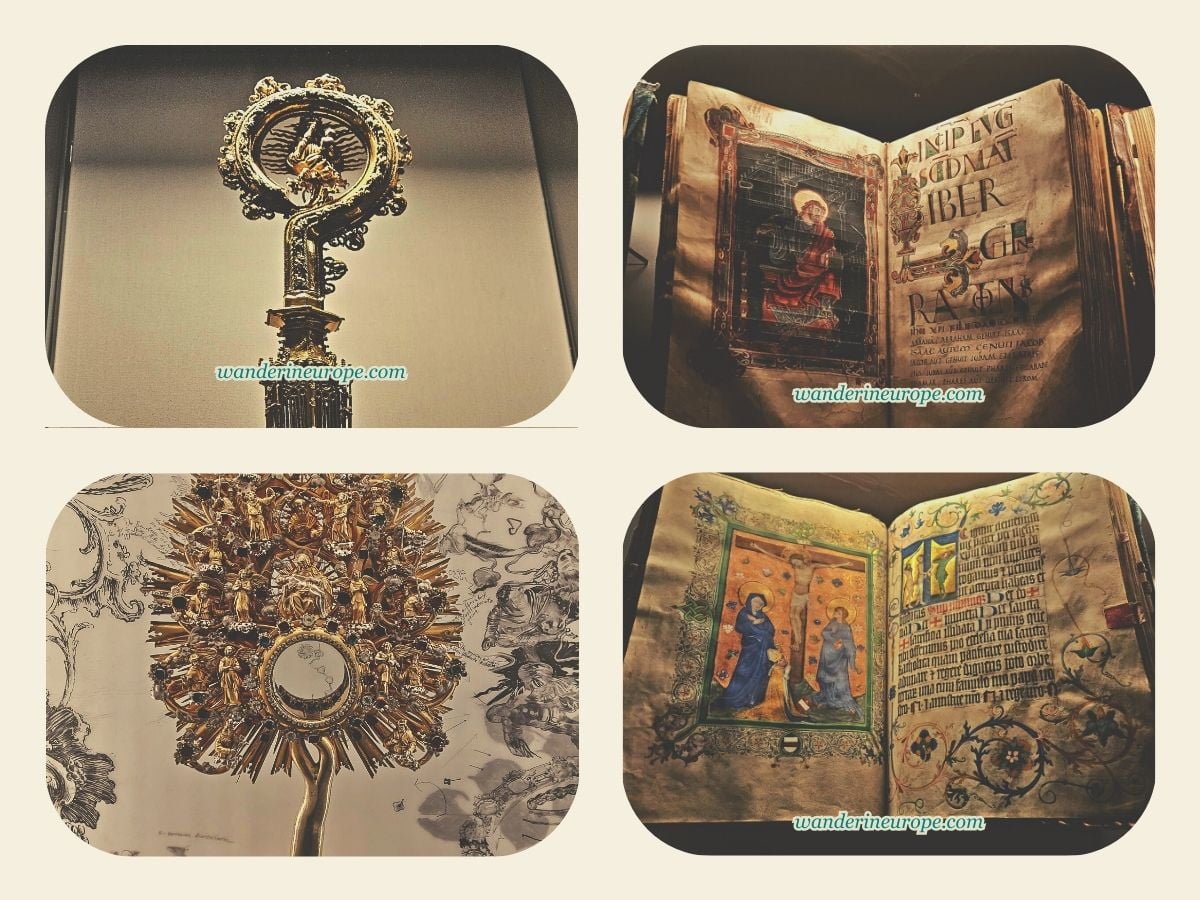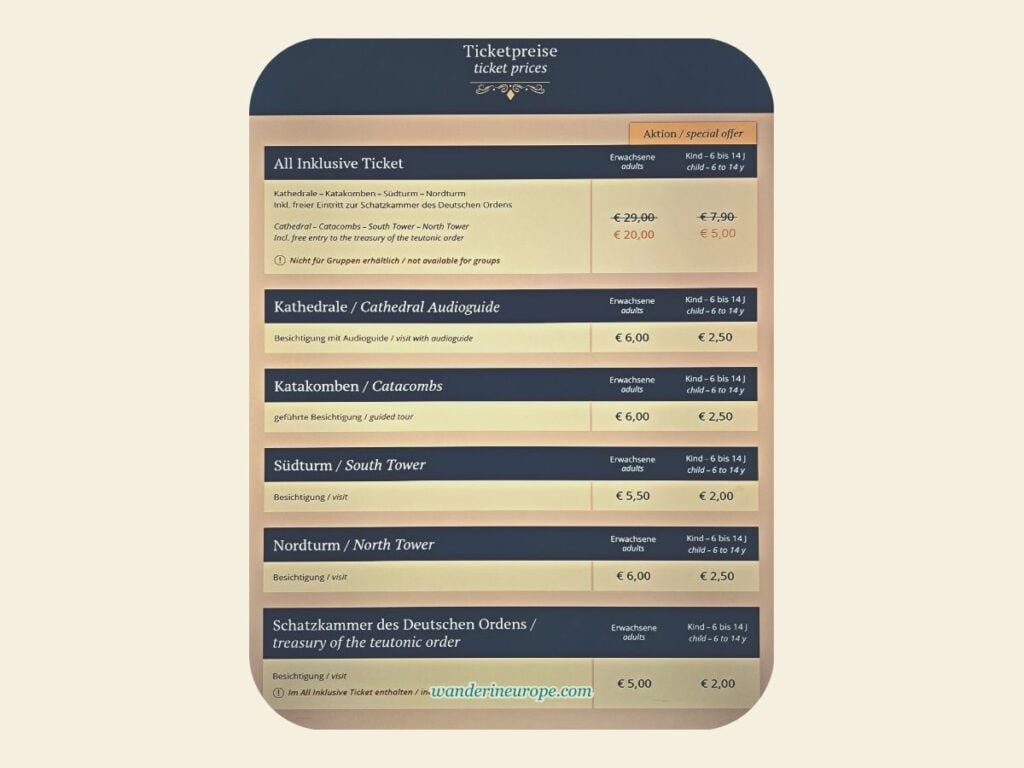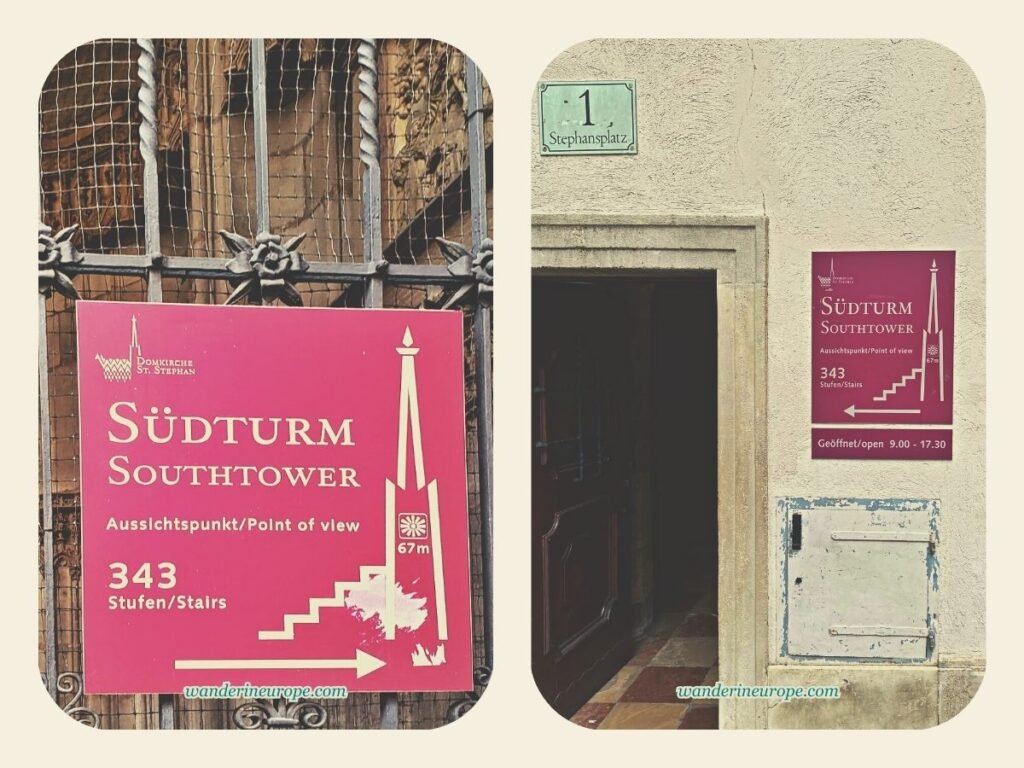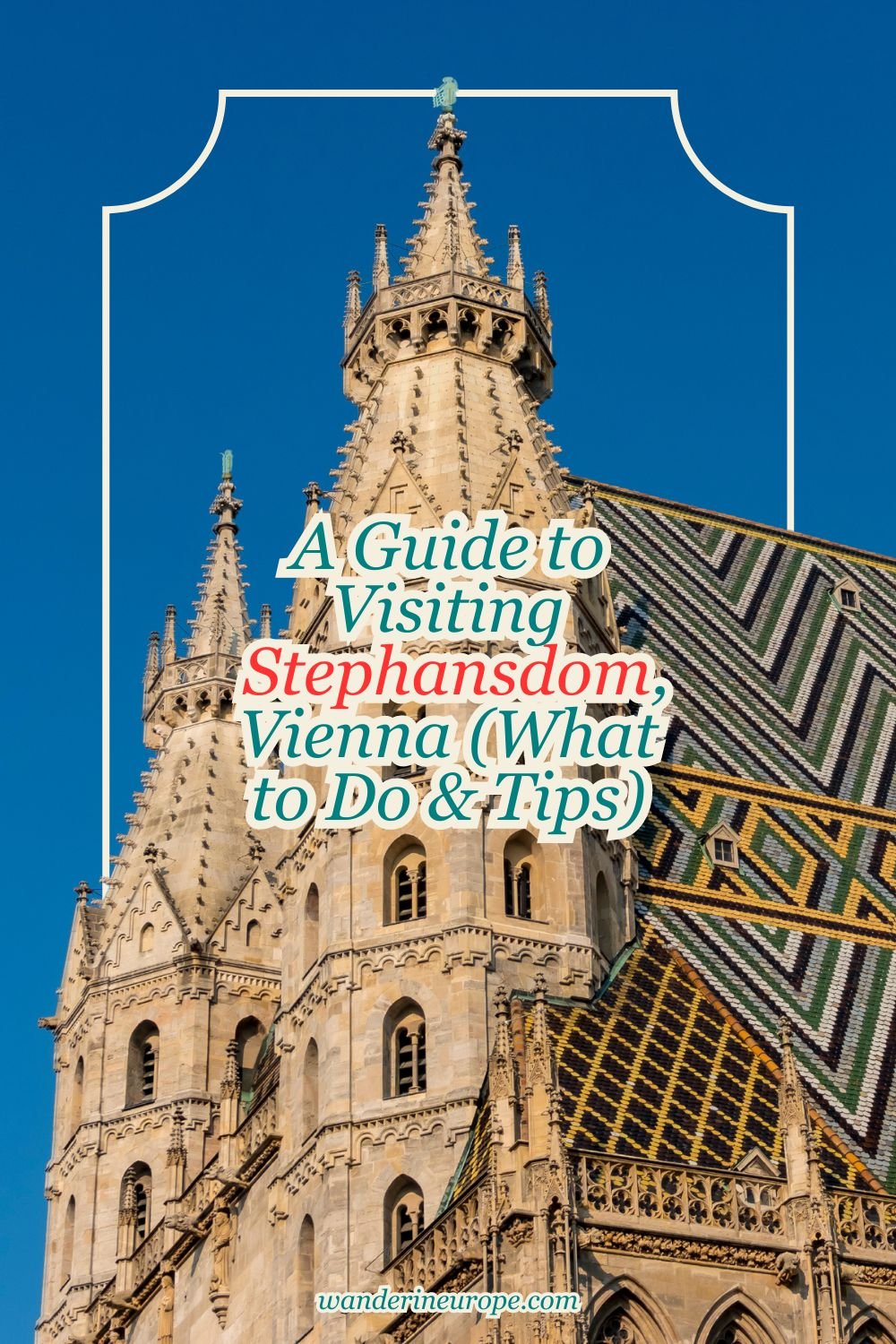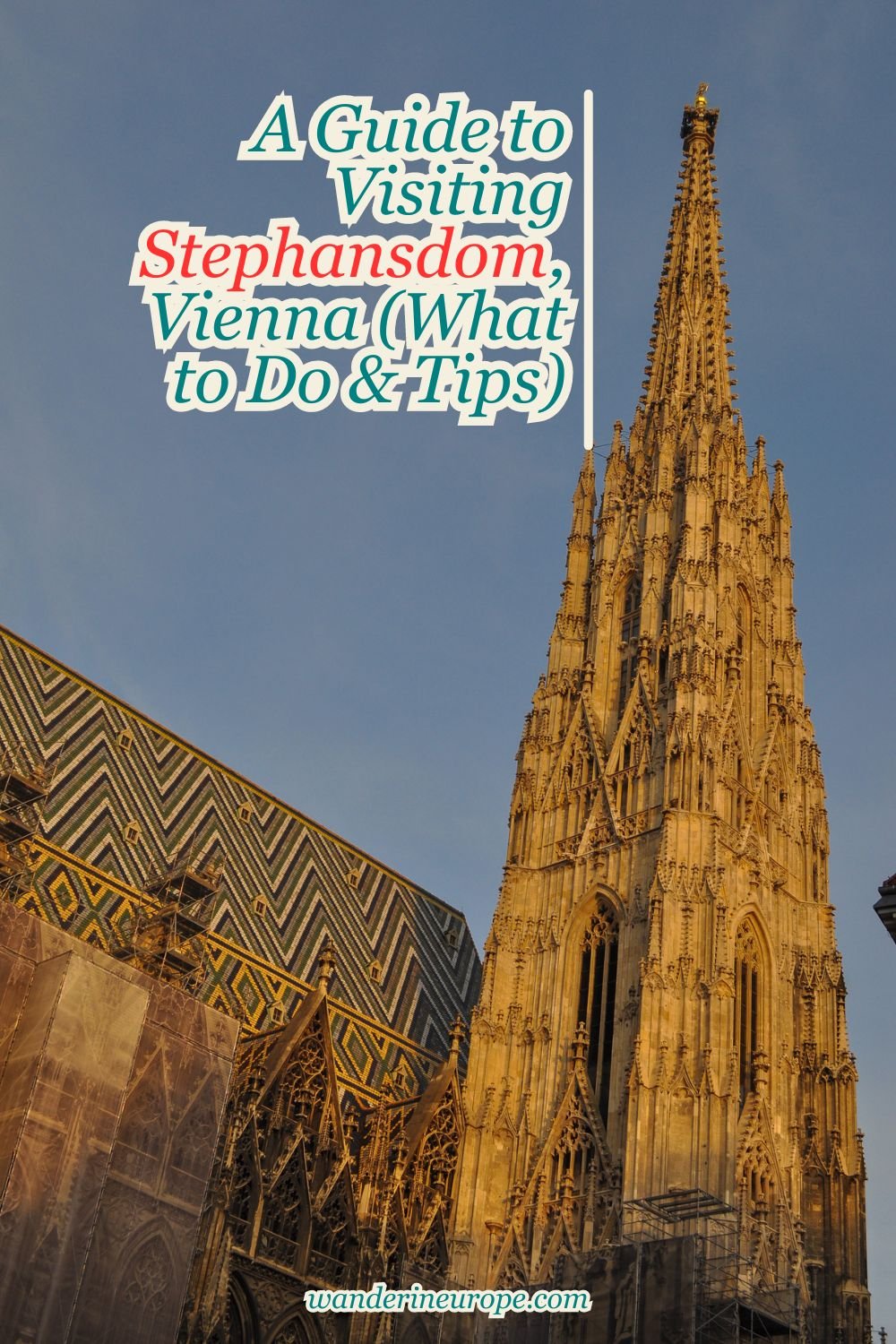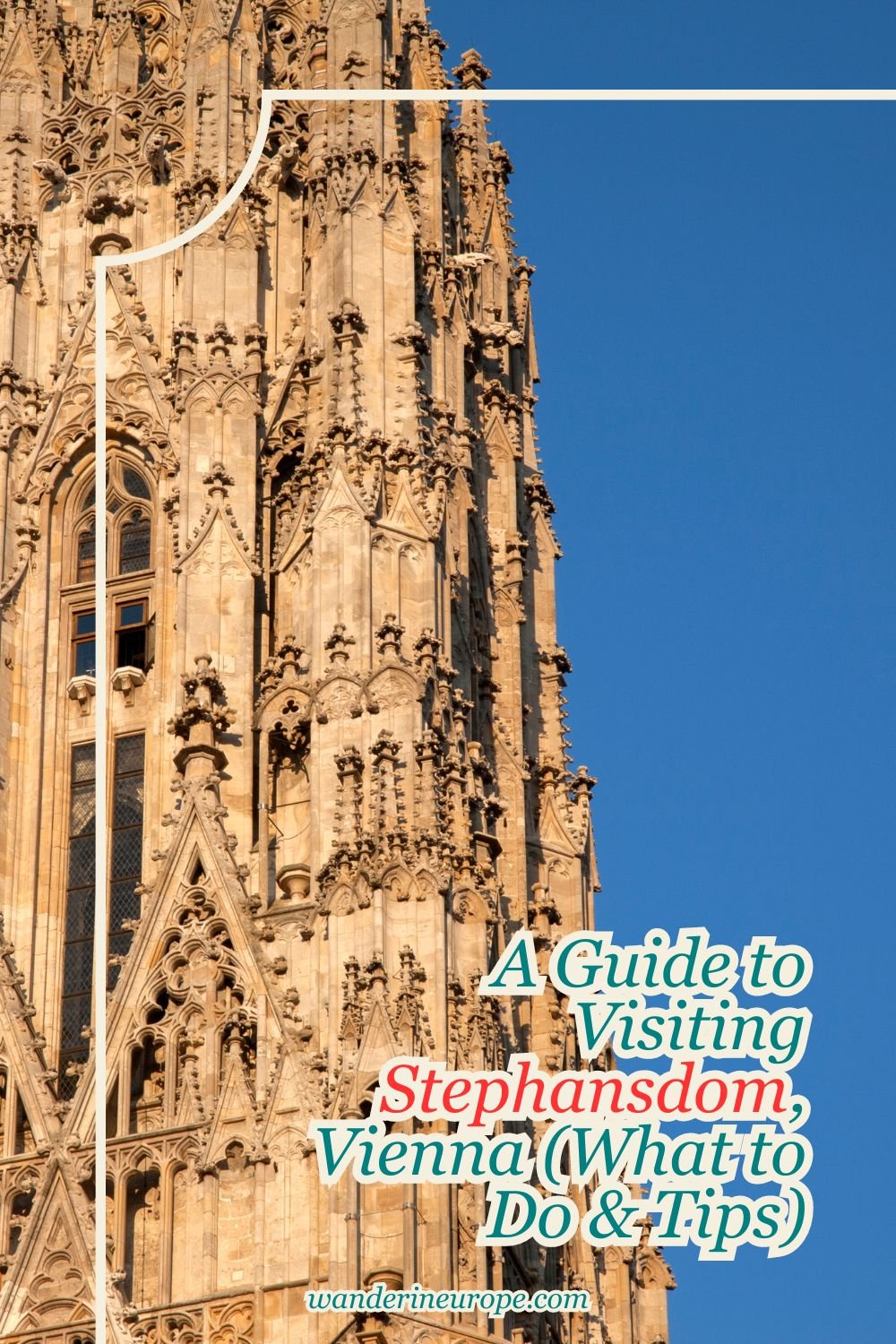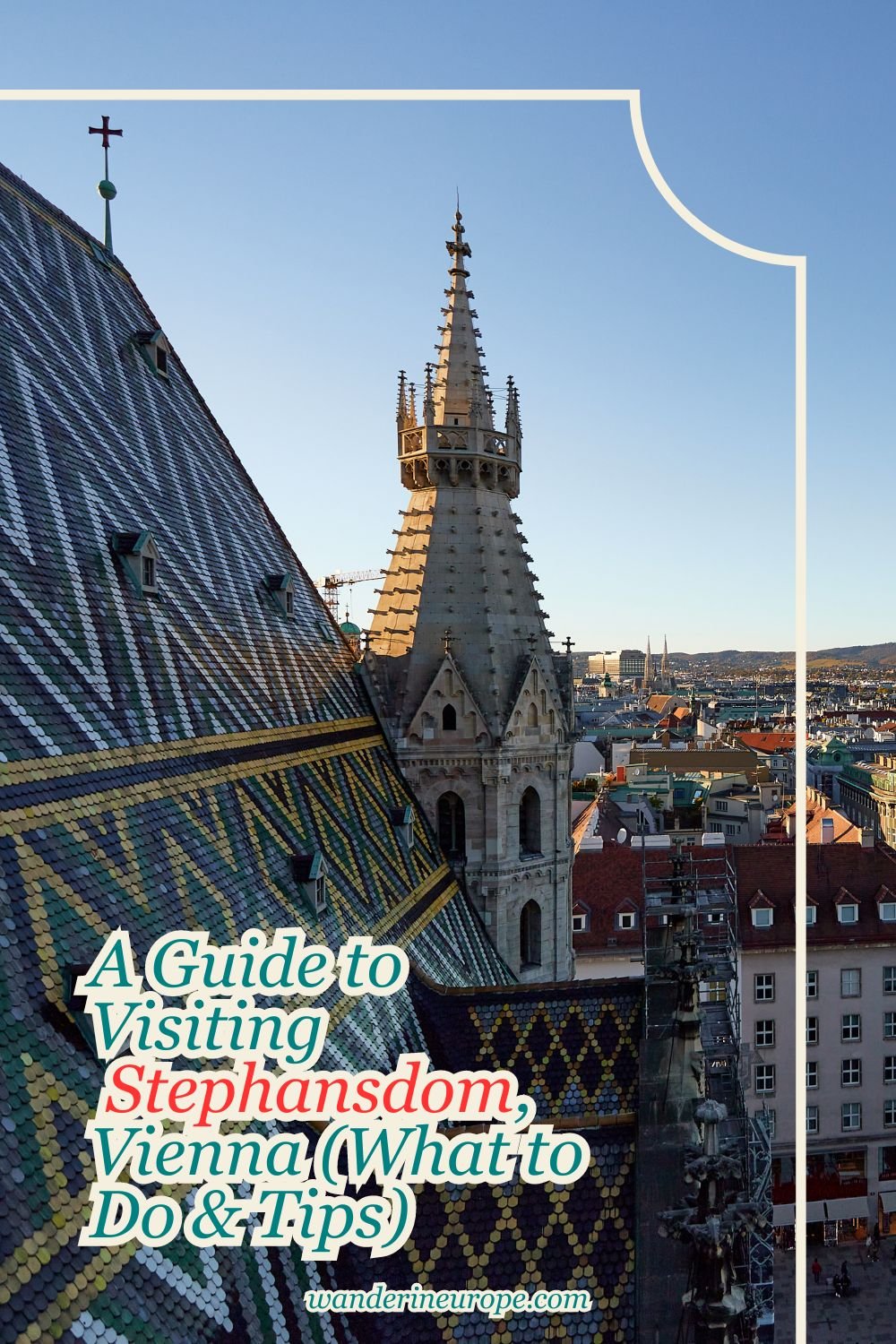A Guide to Visiting Stephansdom, Vienna (What to Do & Tips)
WanderInEurope is reader-supported. Affiliate links and ads help us keep creating useful content for you.
What to Do in Stephansdom
As you step out of Stephansplatz subway station to see Saint Stephen’s Cathedral, you’ll probably be greeted by a swarm of people moving in every direction on the street first. Don’t be surprised — Stephansplatz is at the heart of Innere Stadt (Old Town), and it’s one of the busiest and liveliest spots in Vienna.


During midday, there are all kinds of people in Stephansplatz, from street performers to tourists exploring every corner of the city on their tricycles. But even with all the hustle and bustle, it’s sure that you’ll quickly get the sight of Saint Stephen’s Cathedral.
Its gigantic and angelic, white Gothic southern tower is a natural eye catcher for anyone in Stephansplatz. If you’re like me, a lover of old architecture, Saint Stephen’s Cathedral would be love at first sight. It’s stunning!
The spectacular view of the cathedral from Stephansplatz is just the beginning, though. This architectural marvel has more to offer, and you’ll learn about them through my list of seven things to do in Saint Stephen’s Cathedral.
1. Appreciate The Exteriors

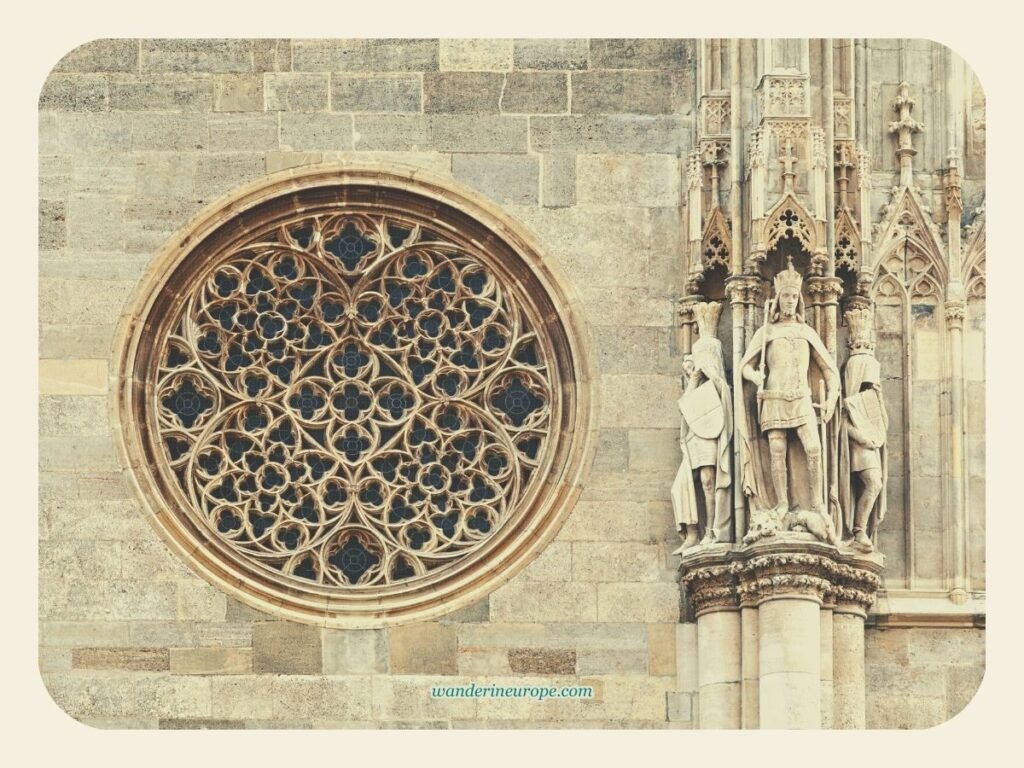
Before stepping into Saint Stephen’s Cathedral, take a moment to walk around its exterior. The cathedral’s facade is a work of art in itself, rich with symbolic designs and features to connect you to Vienna’s storied past.
Note: I assume you’ll be arriving from the Stephansplatz subway station. So, I’ll begin by highlighting the interesting features of Saint Stephen’s Cathedral, starting from the south side, then moving to the back, then north, and finally its facade.
Take a look: Budget-Friendly Vienna Experiences Under $100 (opens in a new tab)
2. Explore The Interiors

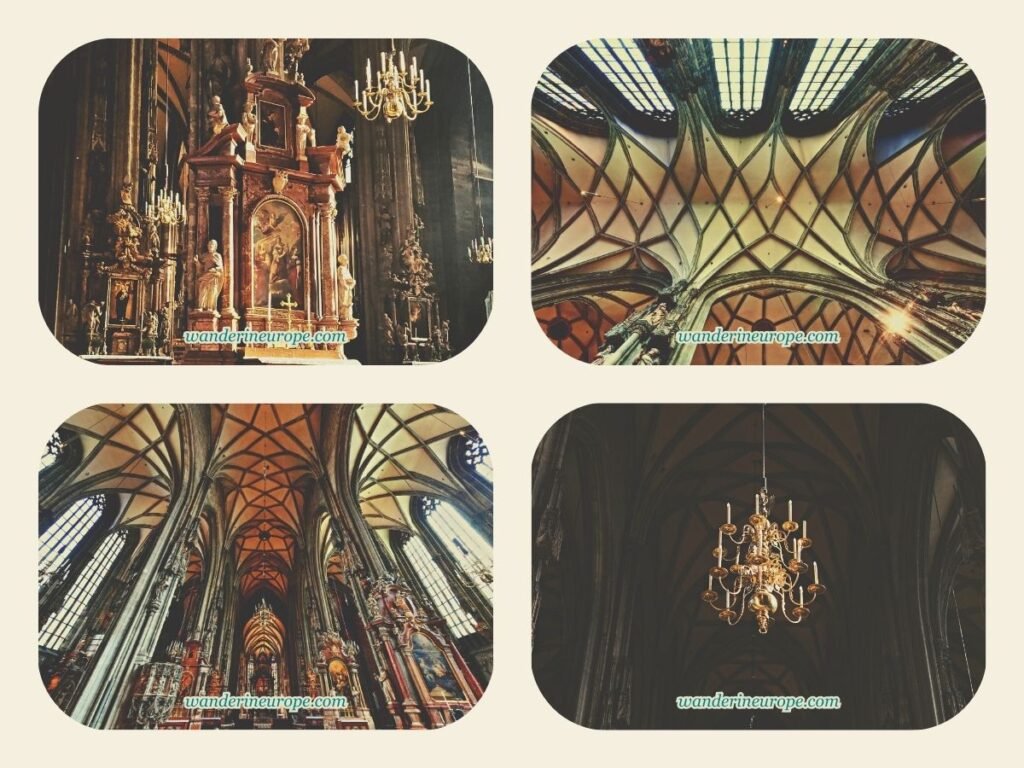
For believers and architecture enthusiasts alike, a visit to the interior of Saint Stephen’s Cathedral in Vienna promises to be an unforgettable experience.
The cathedral is home to an array of miraculous religious items, stunning religious artworks, and impressive architectural details that are sure to inspire awe and admiration. As you go through the cathedral, you’ll probably take a lot of photos to remember how pretty it is.
3. Visit The Catacombs

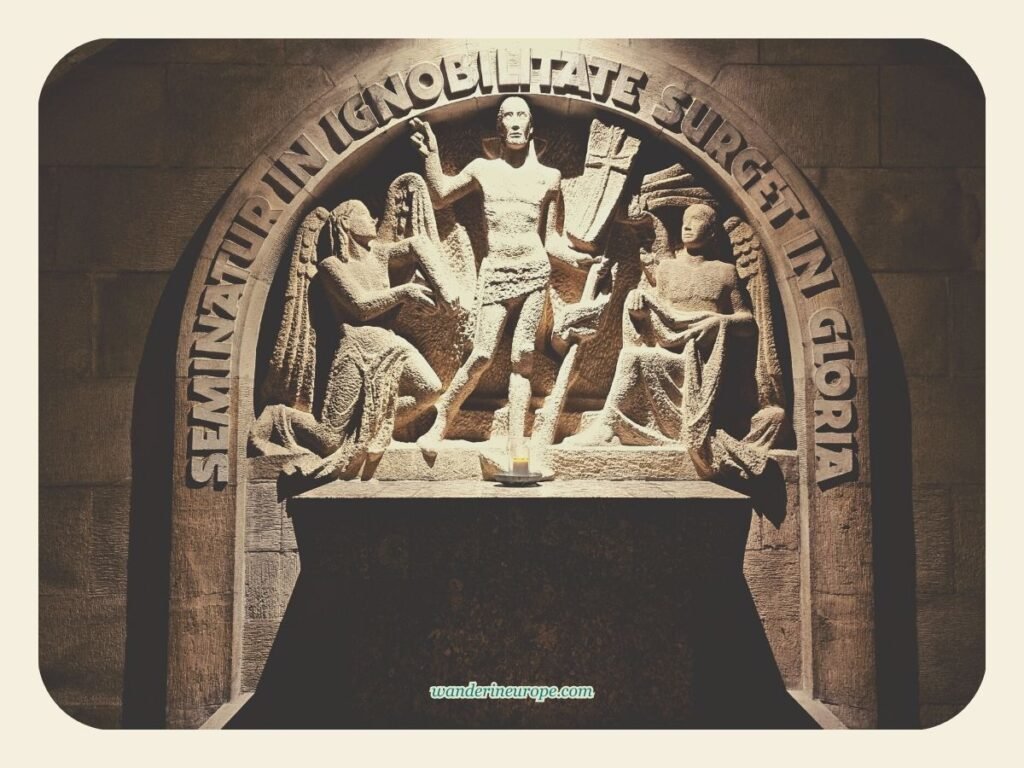
If you enjoy discovering unusual places and having unique experiences while traveling, you may want to consider taking a guided tour of Saint Stephen’s Cathedral’s catacombs. These catacombs date back to the 14th century and contain some of Vienna’s most peculiar discoveries, including the remains of bishops and notable Viennese figures.
4. See the Bell in the North Tower

While wandering around Saint Stephen’s Cathedral, you might see that visitors are able to climb to the top of the cathedral’s north tower. To me, it is one of the must-do activities when visiting Saint Stephen’s Cathedral. The panoramic views of Vienna and a chance to see the cathedral’s mosaic-tiled roof up close is a great experience!
5. Behold the View of Vienna from the South Tower

While you can already enjoy a panoramic view of Vienna from the north tower of Saint Stephen’s Cathedral, the view from the south tower is even better and higher. From high above the tiled roof, a 360-degree panorama of the city awaits you.
6. Attend a Concert

Like many churches in Europe, Saint Stephen’s Cathedral is also a venue for concerts.
Classical music pieces by Mozart, Beethoven, Bach, and Haydn – some of the greatest musical geniuses – are performed by musicians in the cathedral. The church’s new 12,000-pipe organ is used to fill the interior with a calming atmosphere. From the end of May to October, Vivaldi’s “The Four Seasons” is performed on Saturdays.
Fun fact: Vivaldi was a master at creating musical imagery – from gentle breezes and powerful storms to birdsong and barking dogs, hunting scenes and peasant dances. His work is something you might like to hear in person before you leave the cathedral.
Tip: To maximize your time and have a chance to rest, consider attending a concert after climbing the South Tower.
7. Continue to Dom Museum Wien

Did you know that Saint Stephen’s Cathedral has its own museum located right next to the church? The museum boasts an incredible collection of sacred and historic artifacts, covering a wide range of periods from Gothic to Art Deco. You’ll find sculptures, precious altars, sacred objects adorned with gold and jewels, portraits, liturgical manuscripts and books, and stunning vestments.
Visiting Information
One thing to keep in mind when planning your trip to Vienna and including St. Stephen’s Cathedral on your itinerary is that the cathedral is massive! There are several parts to explore and a museum to visit.
At a minimum, you might want to allocate 2 hours of your day to St. Stephen’s Cathedral, and perhaps 3 hours if you want the full experience and to listen to the entire length of the church’s audio guide. If you’re planning on climbing both towers of St. Stephen’s Cathedral, you might need more than 3 hours.
Note: There’s no time limit on top of the towers, you can hang out as long as you like. Take in the moment and savor the view from the heart of a historic city!
From great hotel deals to skip-the-line tickets and affordable eSim to cheap rentals, click here for the best hotel deals and more travel discounts.
Explore Vienna!
What else is there to see besides St. Stephen’s Cathedral? So many!
Try the wanderer’s favorite experiences in Vienna. From breathtaking views to remarkable landmarks, these unforgettable places made exploring this amazing city so special.
For ideas and inspiration on making the most of your visit to Vienna, check out the travel plans below.
Find all the travel guides to Vienna and its tourist attractions below.

Sources
For the latest news, updates, and additional information about St. Stephen’s Cathedral, take a look at these websites:
- Official Website of Saint Stephen’s Cathedral
- Official Website of Dom Museum Wien
- History of Saint Stephen’s Cathedral (Wikipedia)
For a convenient, unique, or more enriching visit, check out these experiences and services:


Pin this to save it for later or bookmark it to read anytime.




